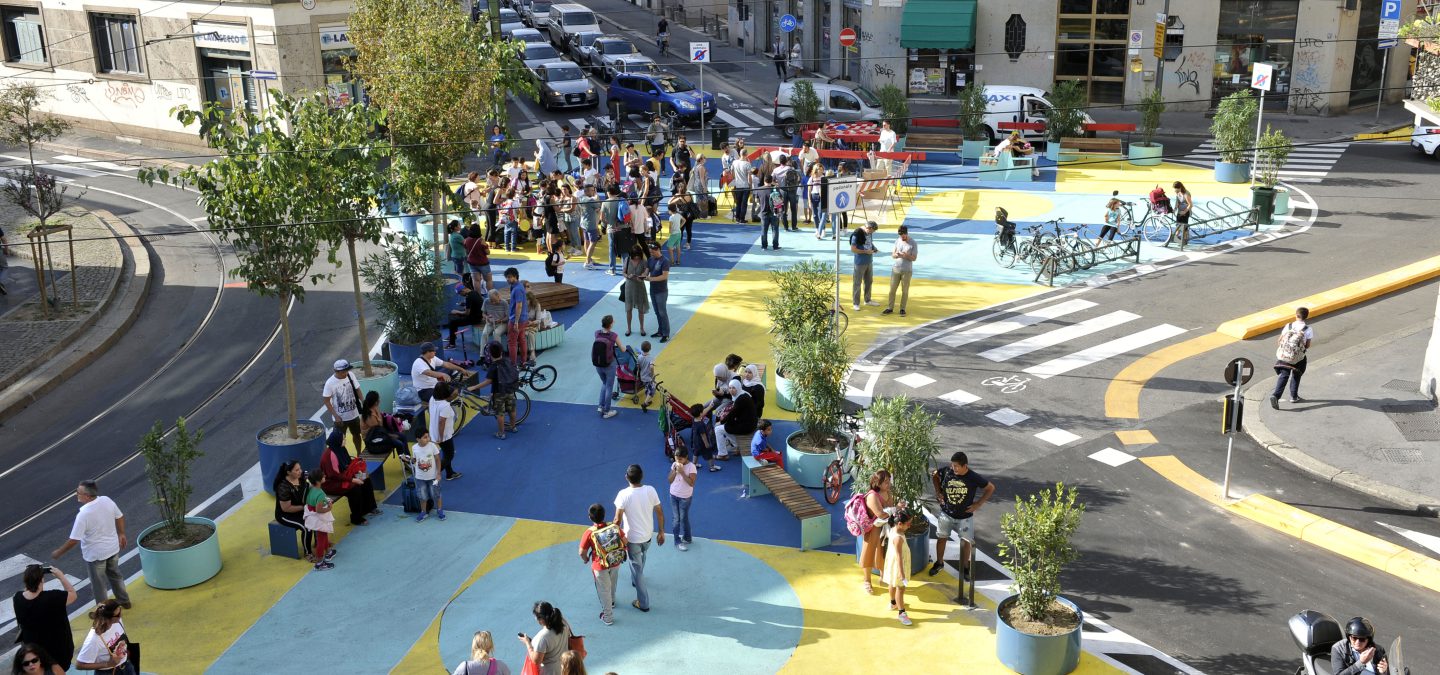
Keep up with our latest news and projects!

In Milan, the municipality and citizens have collaborated to create new urban squares through the innovative and versatile tool of tactical urbanism. These interventions have also become part of the municipality’s strategy in response to the impact Covid has had on Milan’s public space. Various fast, low-cost and participatory interventions – such as new pedestrian areas and bike-lanes – stimulated new urban uses of space, whilst simultaneously raising awareness for other urban issues like sustainable mobility.
The results were remarkable, generating a widespread enthusiasm to make them permanent. These transformations of public space envision the city of tomorrow.
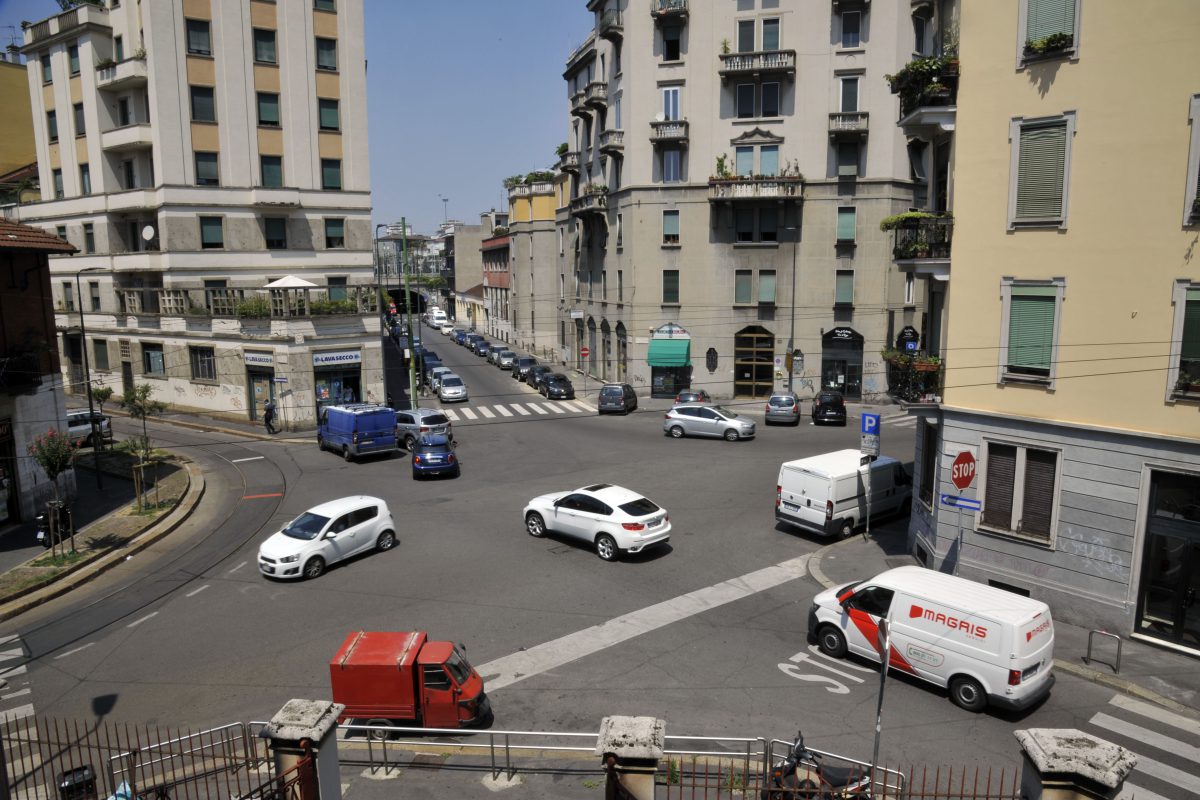 Intersection of via Spoleto and via Venini before tactical intervention, © Comune di Milano
Intersection of via Spoleto and via Venini before tactical intervention, © Comune di Milano
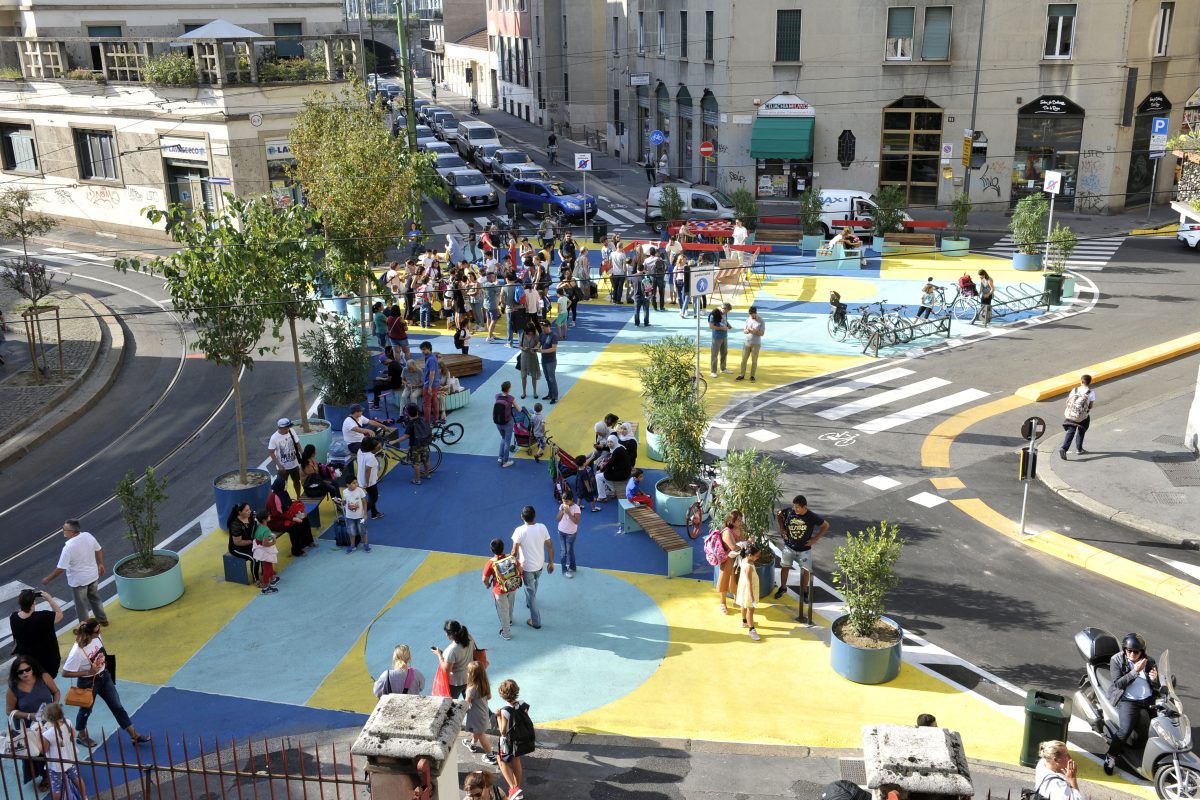 Piazza Aperta in via Spoleto and via Venini, © Comune di Milano
Piazza Aperta in via Spoleto and via Venini, © Comune di Milano
In recent years the city of Milan has seen a period of strong urban regeneration and redevelopment, especially with regard to public space. This has been made possible in a myriad of ways and thanks to the contribution of several actors. It is this theme which will be the focus of this article.
The Administration has set a renewed urban strategy, which was established in the last Territorial Government Plan (Piano di Governo del Territorio, or PGT) in 2020. The PGT regulates the urban development processes for upcoming years, both on a technical as well as on a general visionary level. This strategy was created together with citizens in various participatory processes.
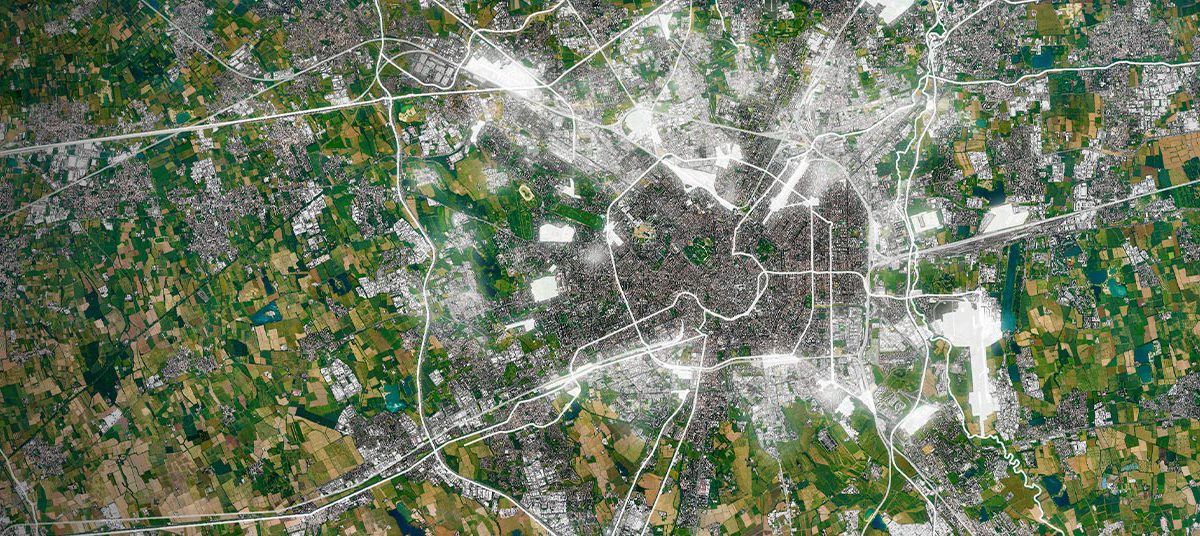 Extract from the PGT, © Comune di Milano
Extract from the PGT, © Comune di Milano
PGT 2030
The Milan PGT, approved by the City Council on October 14, 2019, formulates goals for “Milan 2030”, including:
Participation tools
Citizens who want to participate and work together with the administration on public spaces can do so by using several tools to secure and mobilize the ongoing processes of change.
The first is the Collaboration Pact (Patto di Collaborazione). This pact is an agreement between citizens and the municipality, which facilitates participatory urban transformation processes. Together, specific urban areas are identified as ‘commons’, where tactical interventions will be initiated and the different stakeholders can start with place management.
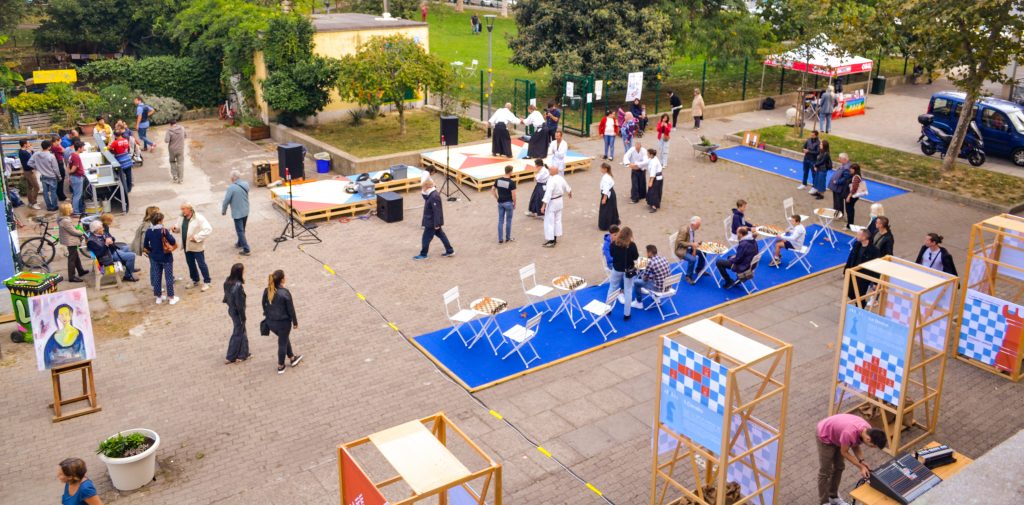 Patto di Collaborazione in Largo Balestra, Milan, © Comune di Milano
Patto di Collaborazione in Largo Balestra, Milan, © Comune di Milano
The second is the Participatory Budget (Bilancio Partecipativo). This budget facilitates processes of civic participation. Here citizens can propose, vote on and co-design physical structures in public spaces. The municipality of Milan has so far executed two editions of this Participatory Budget.
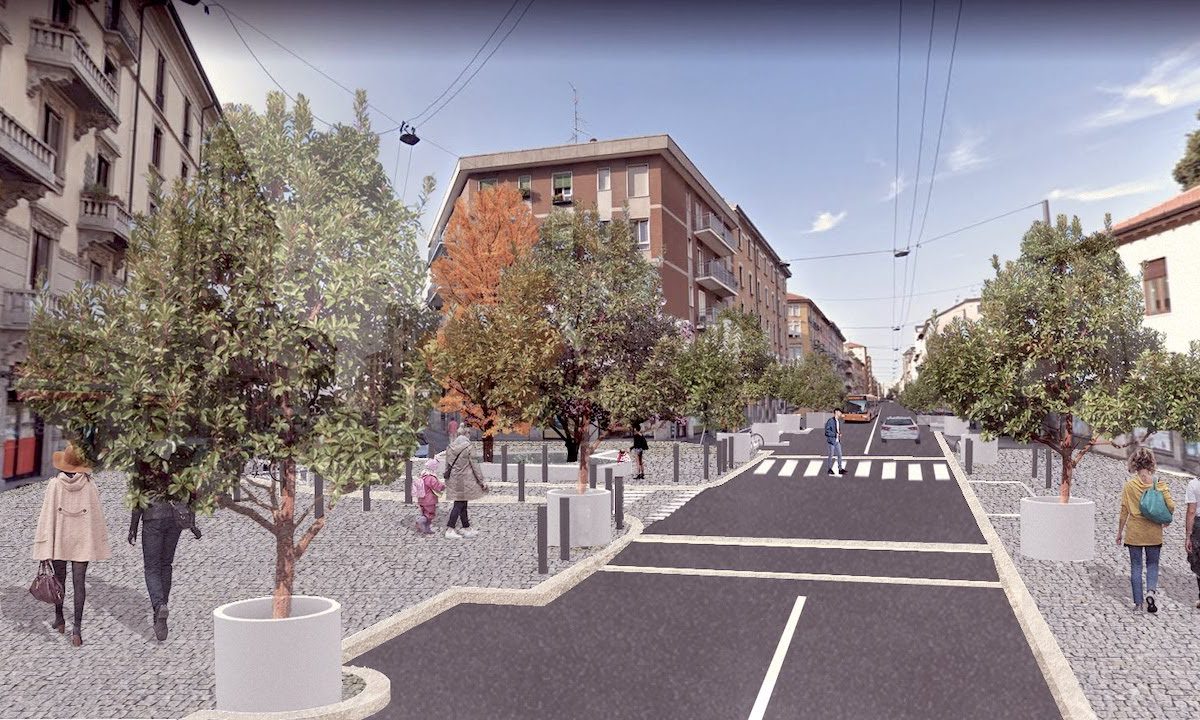 Participatory Budget in via Padova, © Comune di Milano
Participatory Budget in via Padova, © Comune di Milano
On a practical level instead, another tool is tactical urbanism.Tactical urbanism entails non-permanent interventions which can be implemented quickly and at a fairly low cost. The advantage is to generate an immediate impact as well as being able to experiment with innovative solutions. The motto is: faster, cheaper, lighter.
Examples include, but are by no means limited to: painting on the ground (perhaps creating children’s games), placing street furniture (benches, game tables, picnic tables), potted trees or urban gardens, and employing road signs to designate new spaces for pedestrians or cyclists.
The difference between tactical and permanent interventions in financial costs is remarkable. In the following cases, the average cost of realization is roughly a few thousand euros, depending on the complexity and size of the project. This is incredibly cost-effective in comparison to top-down permanent interventions, which often demand millions of euros. It helps to test what works. Because it did not cost a lot, so if it does not work, it can easily be reversed. If it works, it can be made more permanent with higher costs. This is exactly what happened in Milan.
Between Bottom-Up & Top-Down
In this complex framework, the role of the office to which I belong, Officina Urbana, and of “AMAT Agenzia Mobilità Ambiente e Territorio”, the agency we work for, means we:
Therefore our role moves between top-down policy and planning, and bottom-up initiatives led by active citizens and their communities.
The numbers throughout this section of the article show the various collectives, institutions and individuals that joined the Piazza Aperte project.
Pilot projects
The combination of tactical urbanism and Collaboration Pacts led to the birth of the so-called Piazze Aperte (Italian for “open squares”). This is a project developed in collaboration between the municipality of Milan and AMAT with Bloomberg Associates, NACTO and the Global Designing Cities Initiative. The goal was to pedestrianize public spaces, thanks to tactical urbanism interventions, in order to create room for further squares and experiments, together with citizens.
In 2018, the first projects took shape: Piazza Dergano in the Dergano neighbourhood and Piazza Angilberto II in the Corvetto neighbourhood. Both squares were positioned in the center of their respective neighbourhoods, but were characterized by the presence of car traffic with parking lots and large intersections. Looking at these two squares after the tactical interventions, they showed in a very tangible way how by the coming together of experts and actors both local and municipal, the city can be changed. These projects show how the city can be more colorful, active, vibrant and make everyone feel at home.




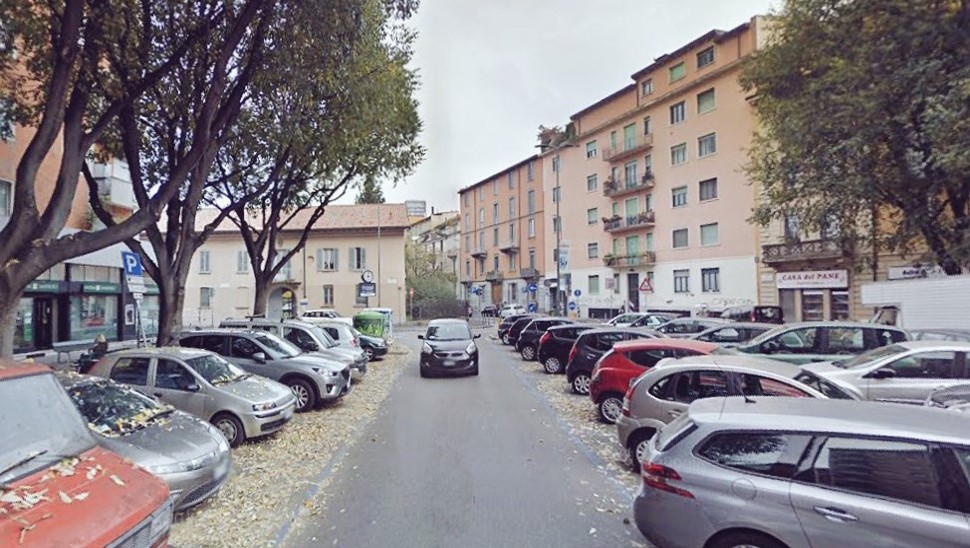 Piazza Dergano before tactical intervention, photo by Demetrio Scopelliti
Piazza Dergano before tactical intervention, photo by Demetrio Scopelliti
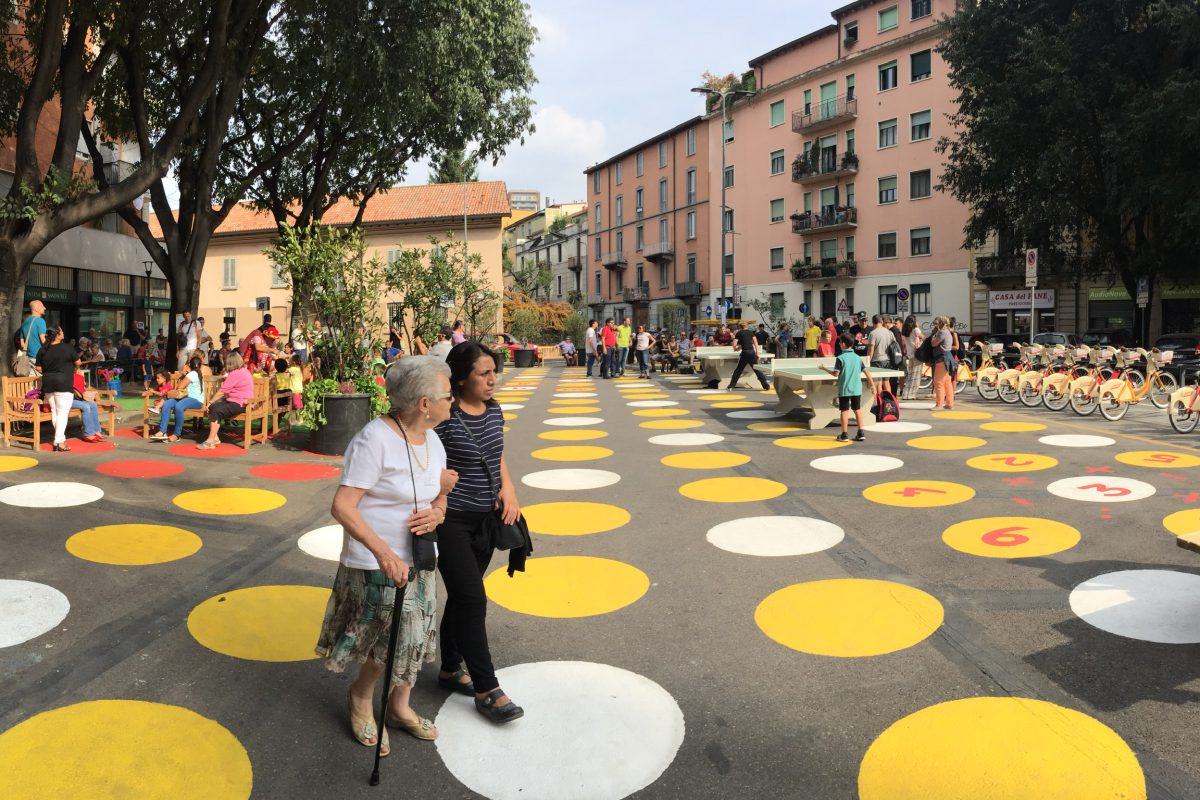 Tactical intervention on Piazza Dergano, photo by Demetrio Scopelliti
Tactical intervention on Piazza Dergano, photo by Demetrio Scopelliti
Public notice
The two pilot projects of Piazza Dergano and Piazza Angilberto II became widely known across the city. We wanted to make use of the momentum these two interventions brought about. So, this led to the publication of a public notice in which the municipality openly asked citizens (individuals, associations, organizations, teams, etc.) to propose public spaces that could be the next subject of the Piazze Aperte project. This was largely enabled thanks to the signing of Collaborations Pacts. At the end of 2019 we had collected 65 proposals.
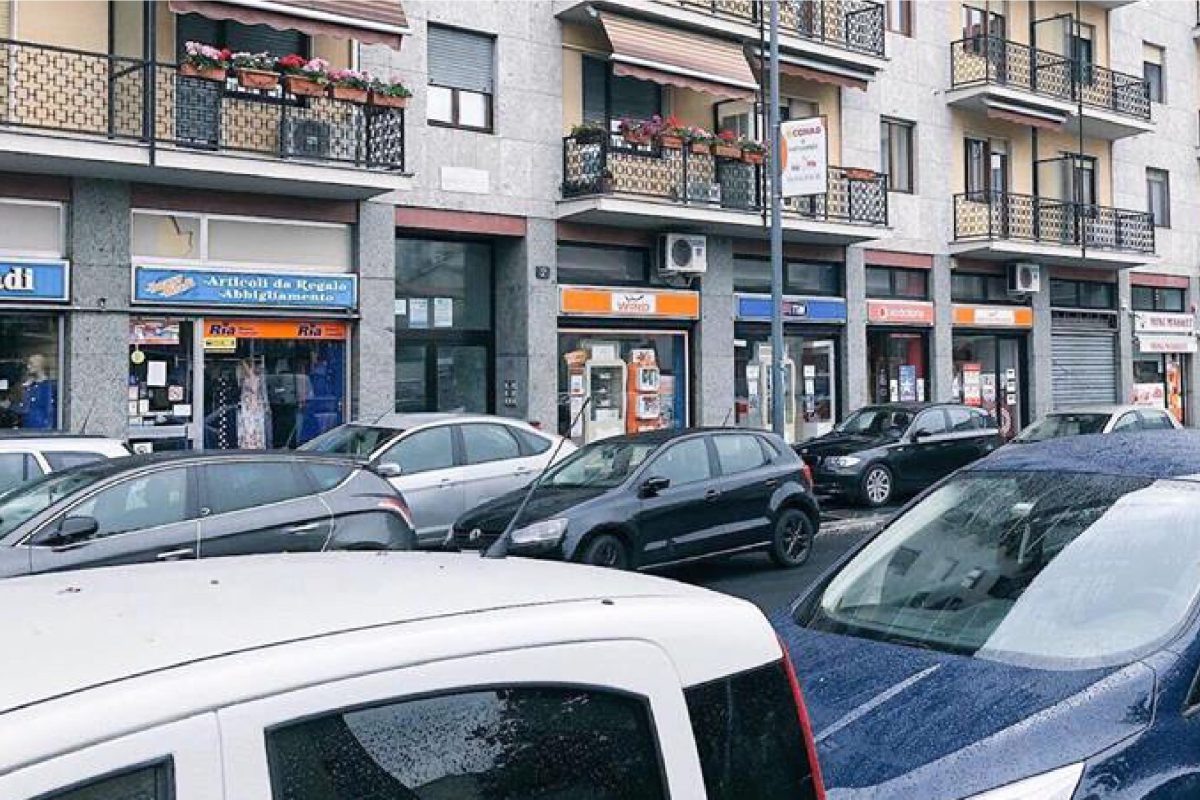 Piazza Angilberto before tactical intervention, photo by Demetrio Scopelliti
Piazza Angilberto before tactical intervention, photo by Demetrio Scopelliti
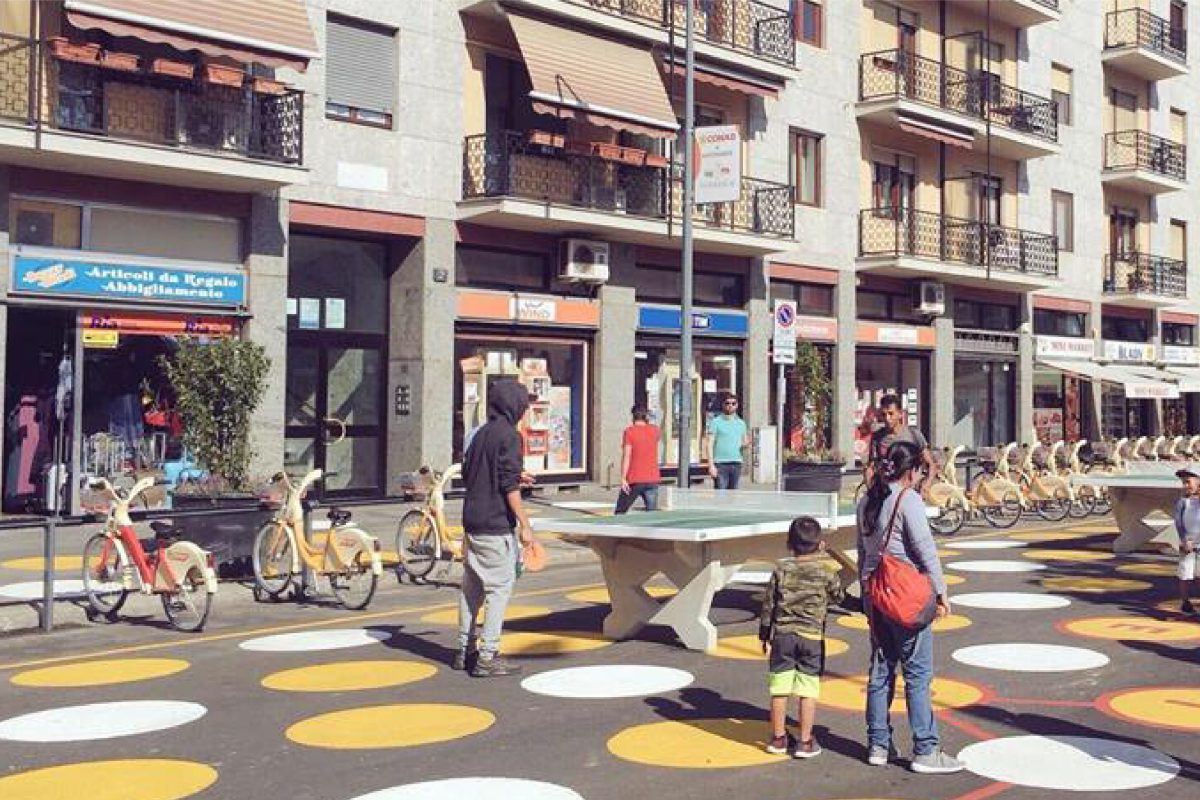 Piazza Angilberto after tactical intervention, photo by Demetrio Scopelliti
Piazza Angilberto after tactical intervention, photo by Demetrio Scopelliti
Program goals




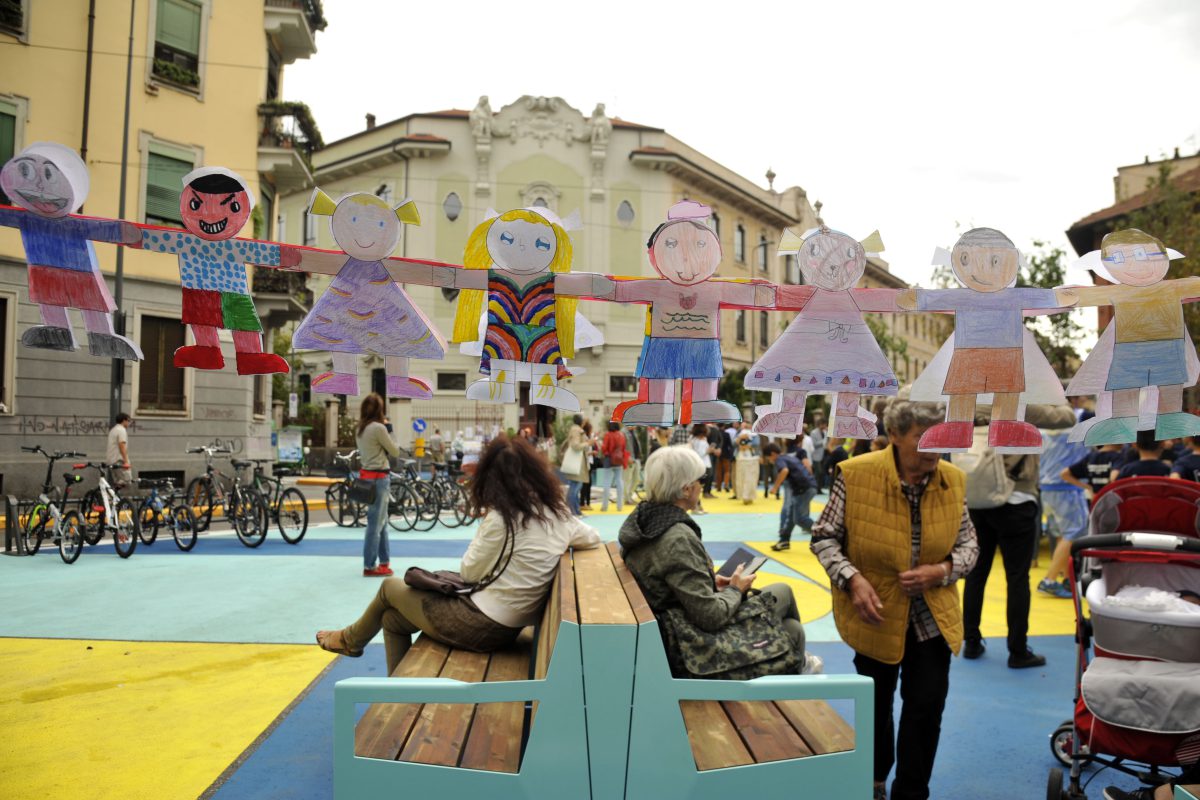 Piazza Aperta in via Spoleto, © Comune di Milano
Piazza Aperta in via Spoleto, © Comune di Milano
The process: from conception to realisation
So began the process of realization of the Piazze Aperte, which followed the same general procedure:
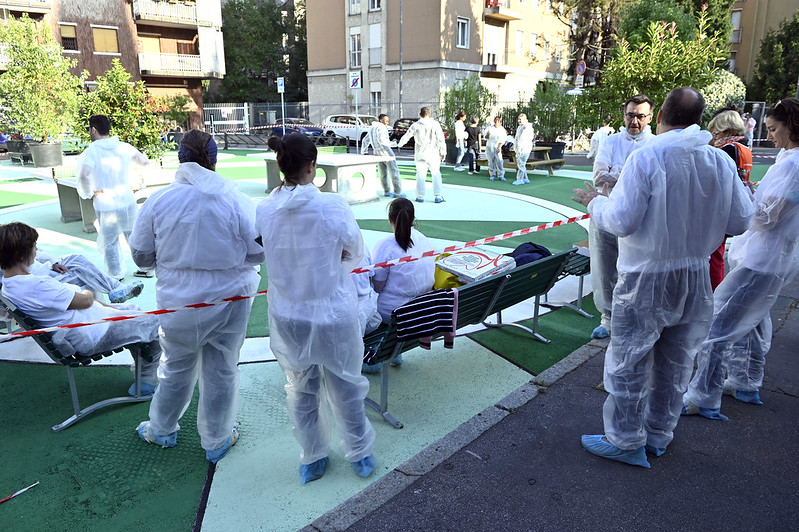 Realization of the Piazza Aperta in piazza Ss. Patroni, © Comune di Milano
Realization of the Piazza Aperta in piazza Ss. Patroni, © Comune di Milano
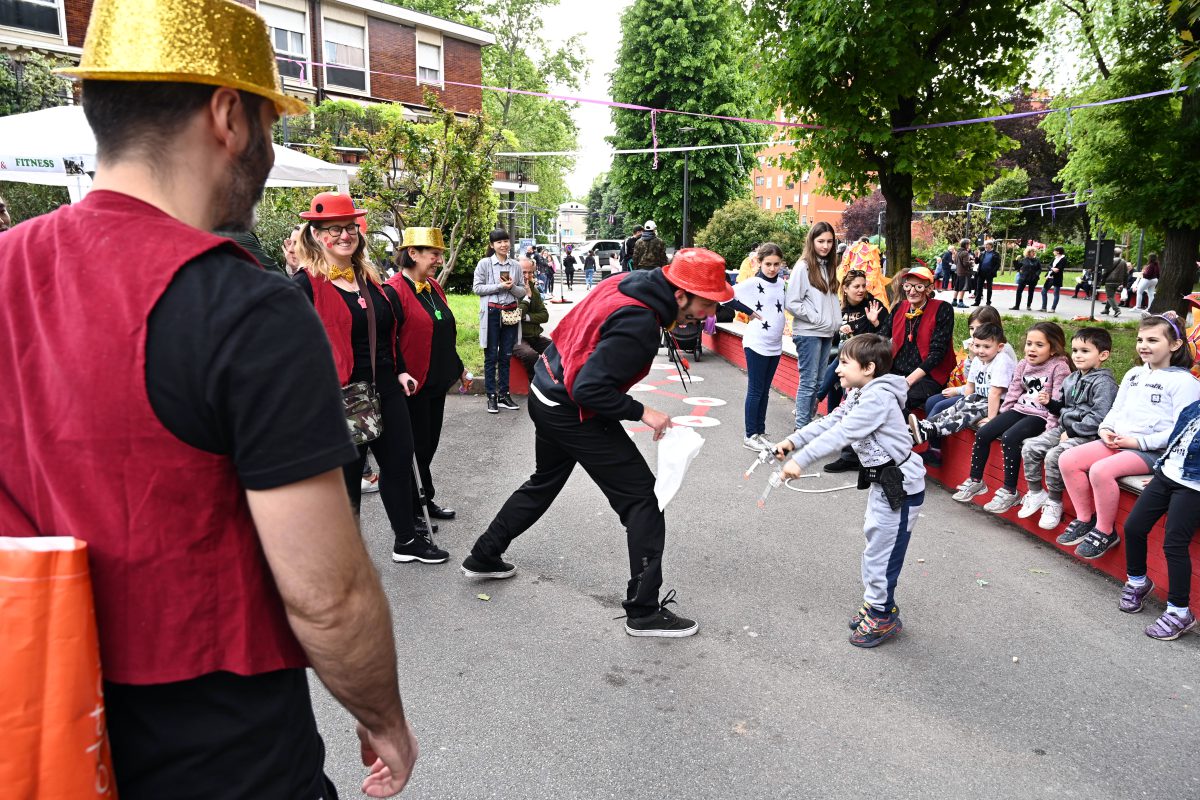 Inauguration of the Piazza Aperta in piazza Gasparri, © Comune di Milano
Inauguration of the Piazza Aperta in piazza Gasparri, © Comune di Milano


Where are we now?
Between 2019 and 2021, more than 30 squares have been built in different suburbs of the city whilst others are currently being planned or built – “Piazze Aperte” is by no means finished. This project has allowed a greater number of people to use public space in places previously unthinkable. Of course, over the years there have been mixed opinions and various criticisms – especially related to the reduction of parking spaces and traffic lanes. But, according to the monitoring and observing public life in the squares, places that are designed for people are used more intensely and loved much more by its users than spaces that are dominated by cars.
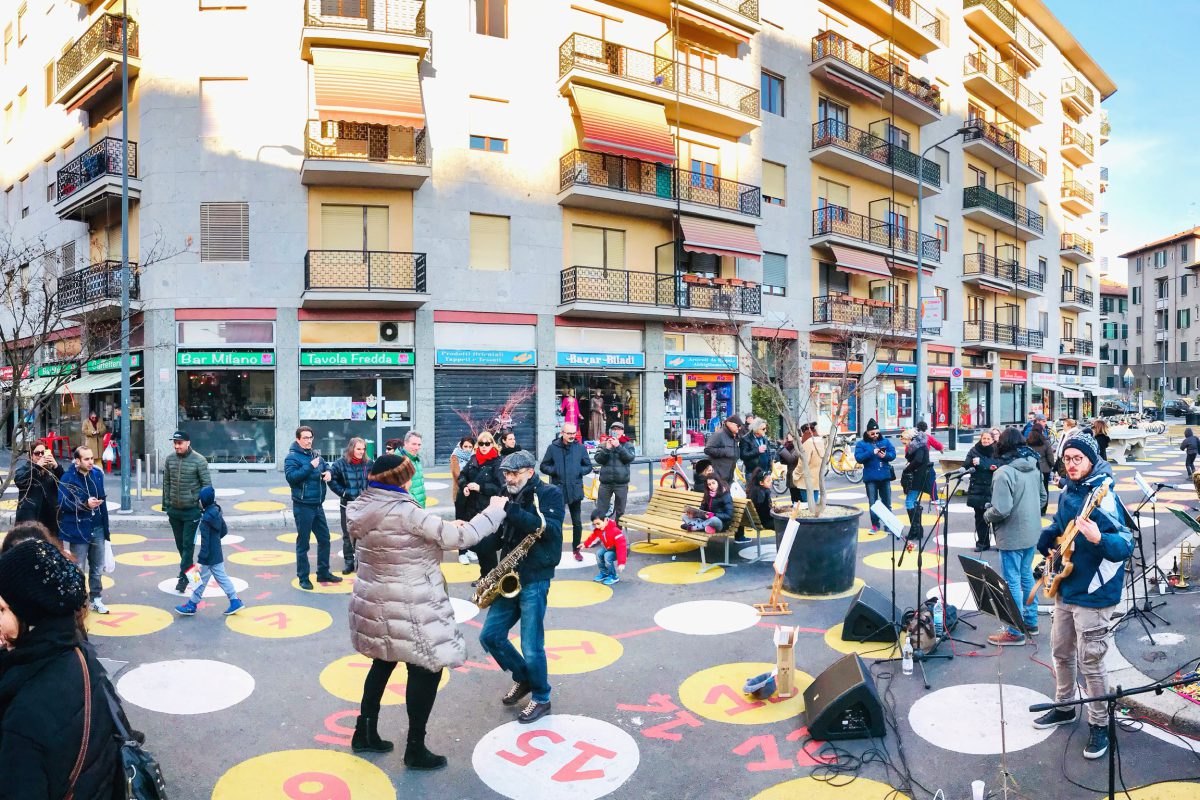 Inauguration of Piazza Angilberto, photo by Demetrio Scopelliti
Inauguration of Piazza Angilberto, photo by Demetrio Scopelliti
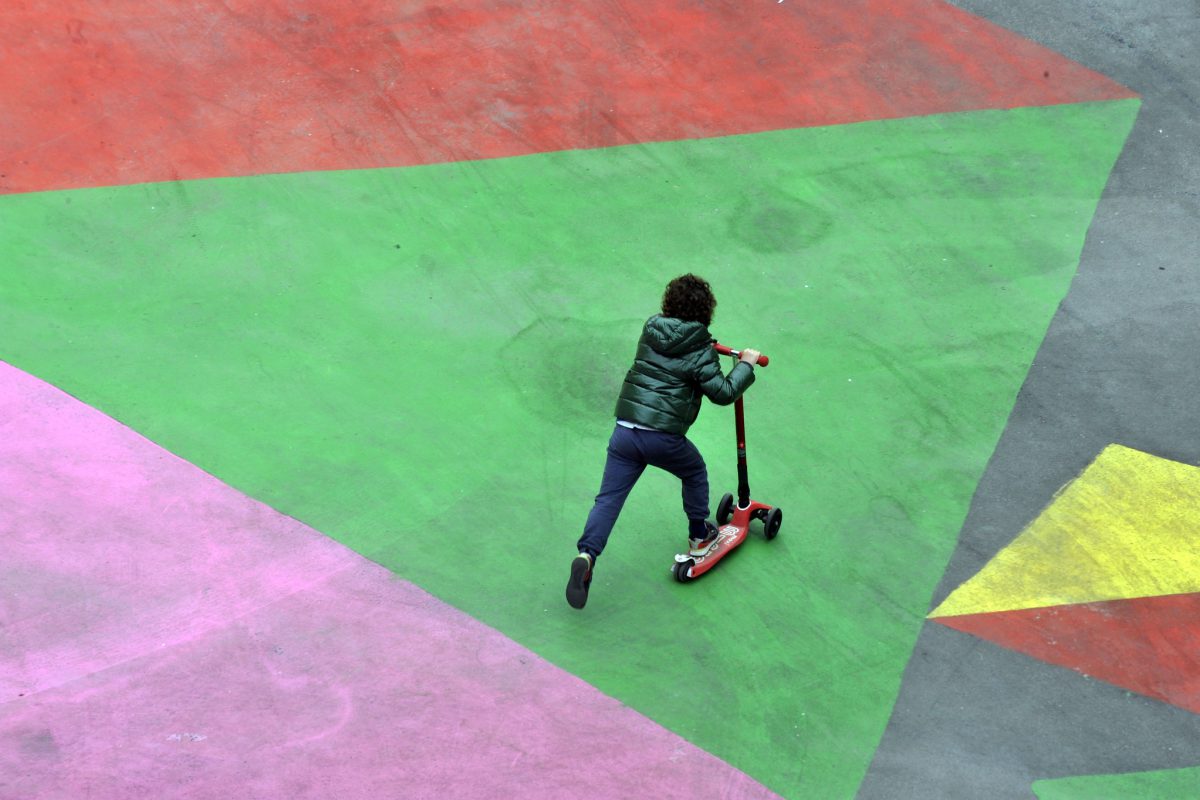 Piazza Minniti, © Comune di Milano
Piazza Minniti, © Comune di Milano
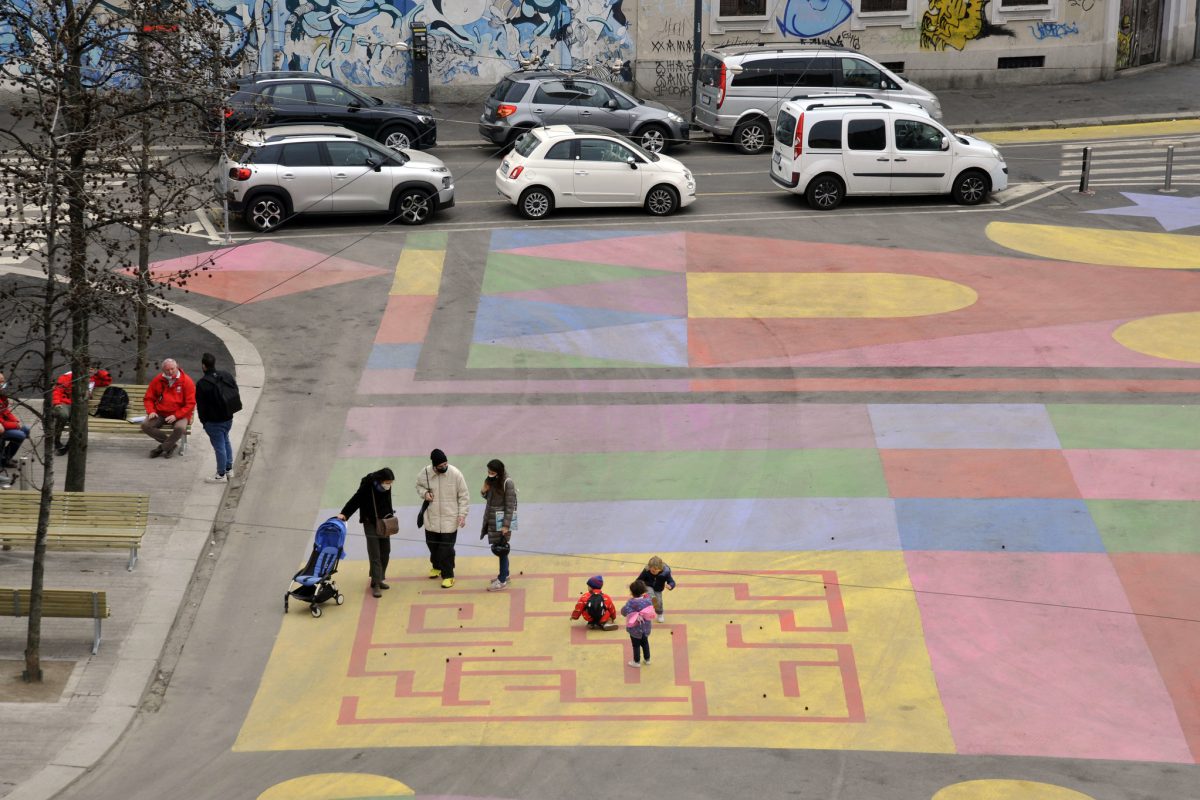 Piazza Minniti, © Comune di Milano
Piazza Minniti, © Comune di Milano
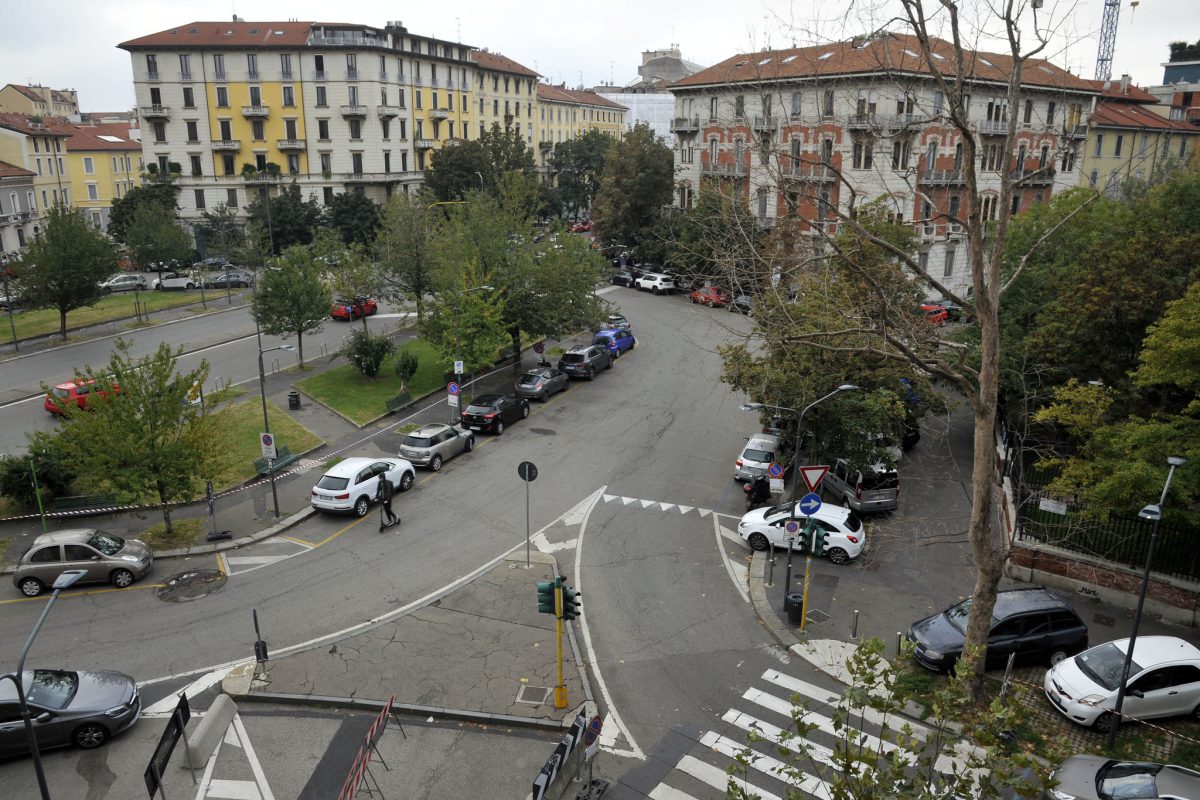 Piazza Sicilia - before Piazza Aperta intervention, © Comune di Milano
Piazza Sicilia - before Piazza Aperta intervention, © Comune di Milano
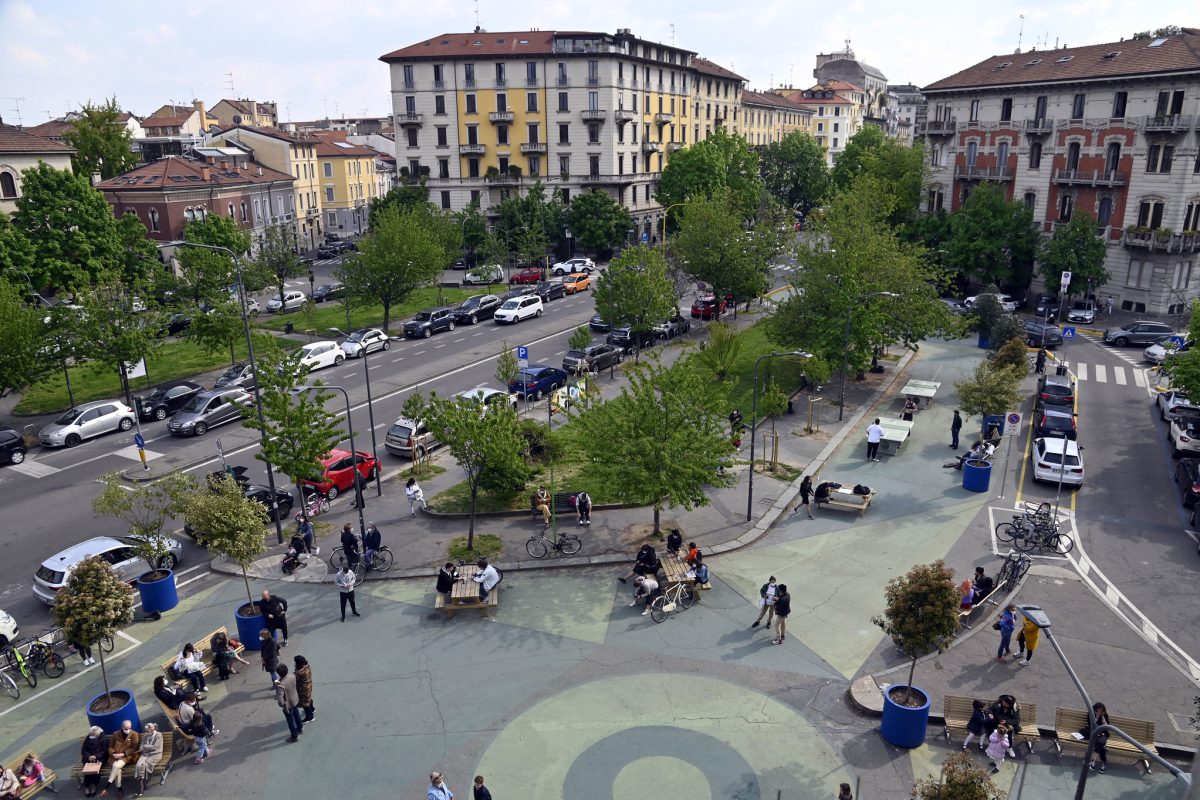 Piazza Sicilia - after Piazza Aperta intervention, © Comune di Milano
Piazza Sicilia - after Piazza Aperta intervention, © Comune di Milano
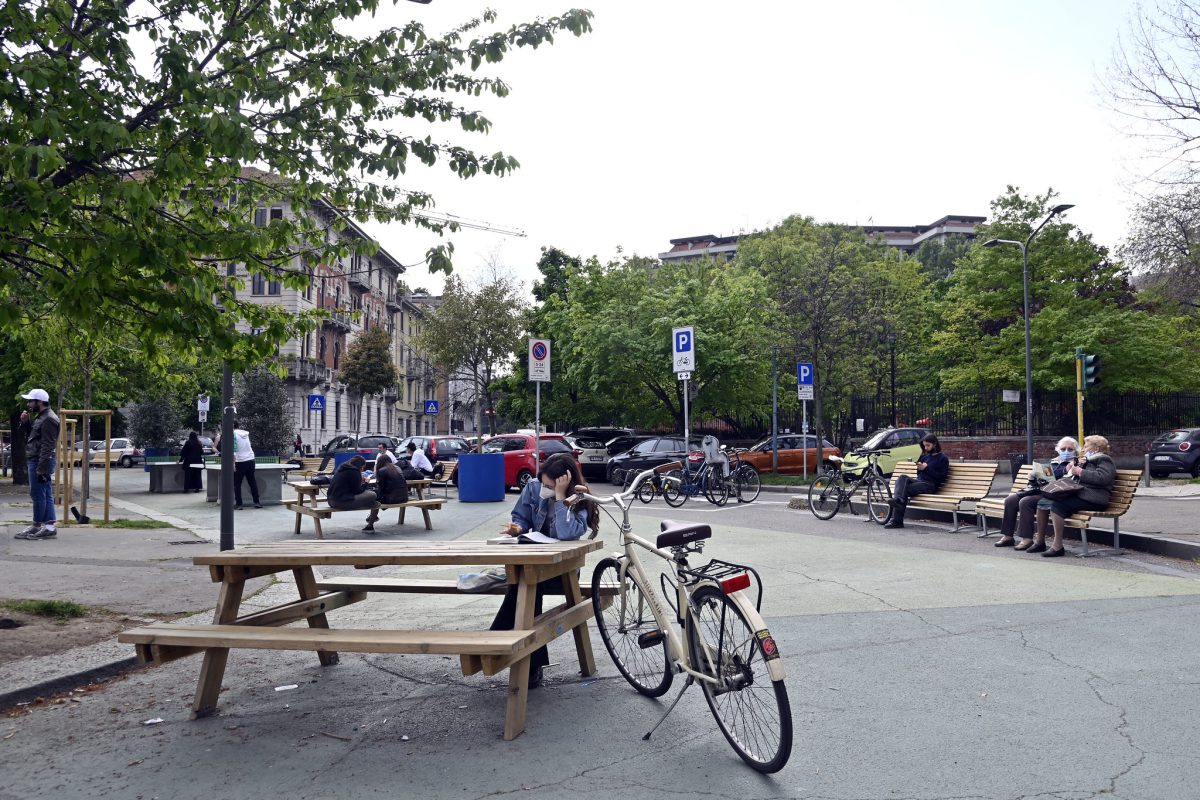 Piazza Sicilia, © Comune di Milano
Piazza Sicilia, © Comune di Milano
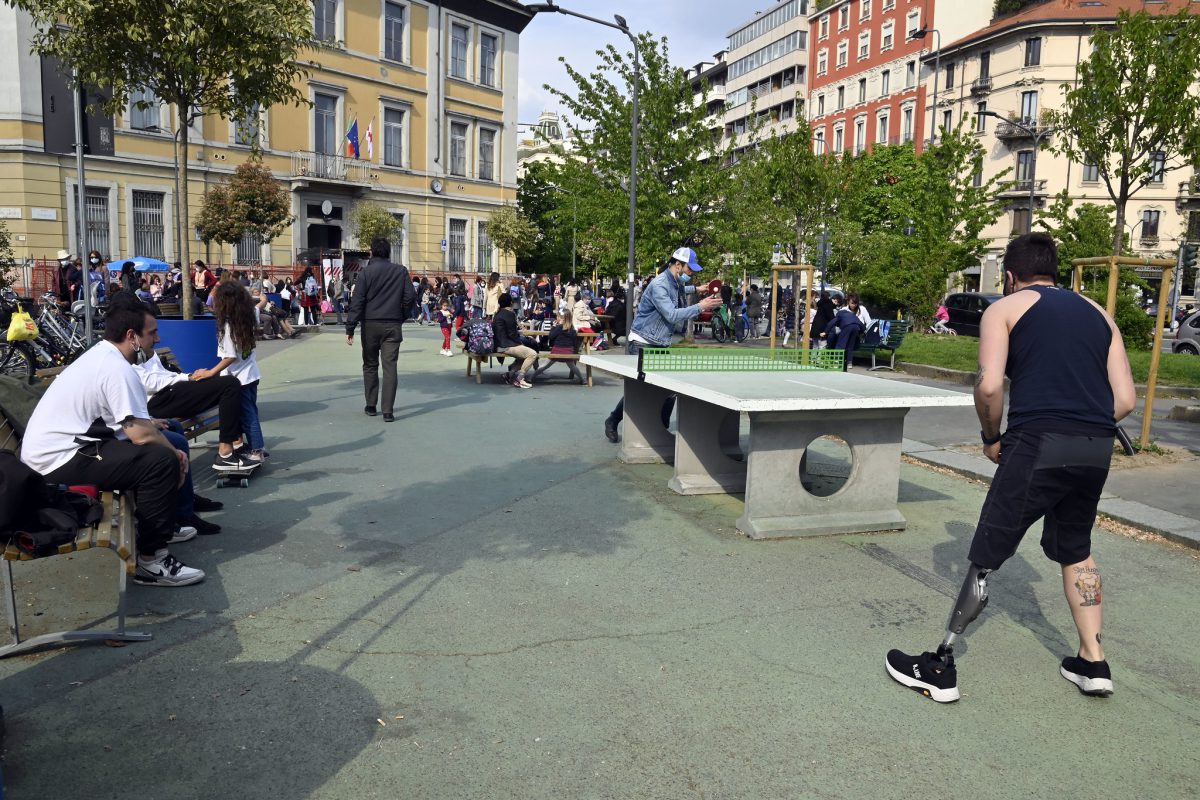 Piazza Sicilia, © Comune di Milano
Piazza Sicilia, © Comune di Milano
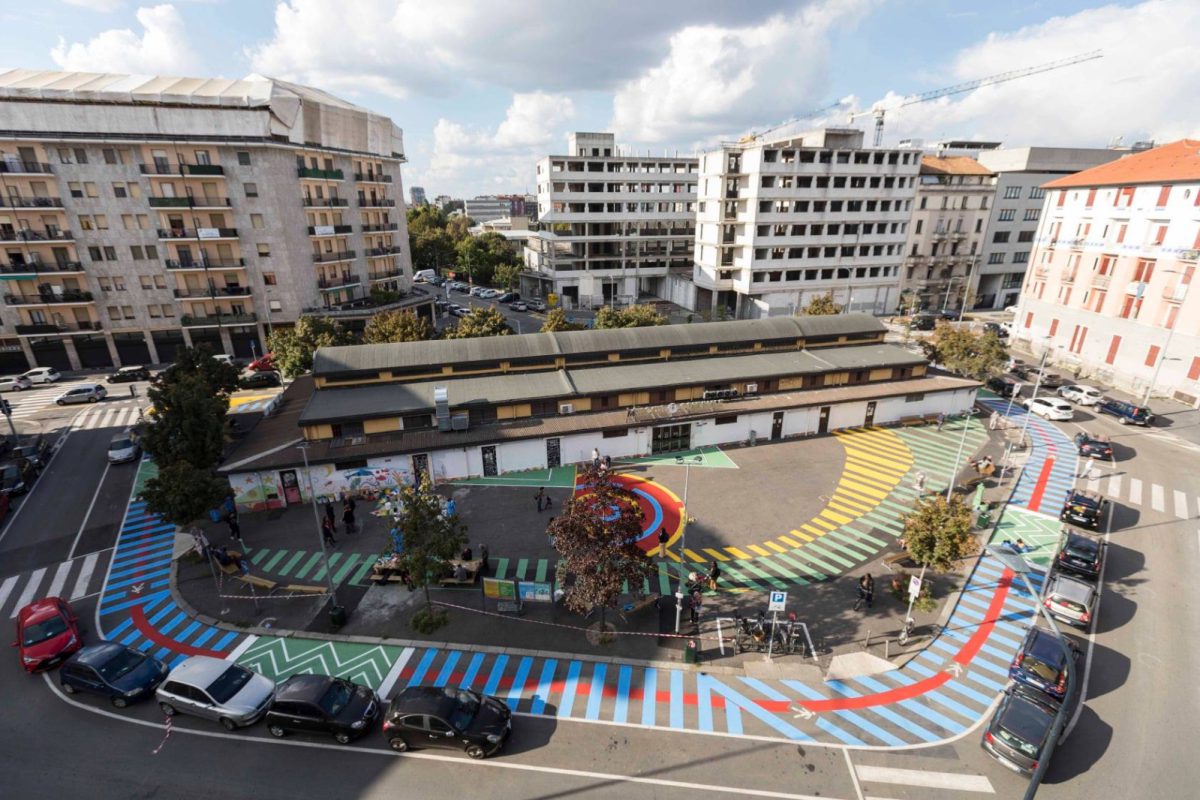 Piazza Aperta in piazzale Ferrara, ©Comune di Milano
Piazza Aperta in piazzale Ferrara, ©Comune di Milano
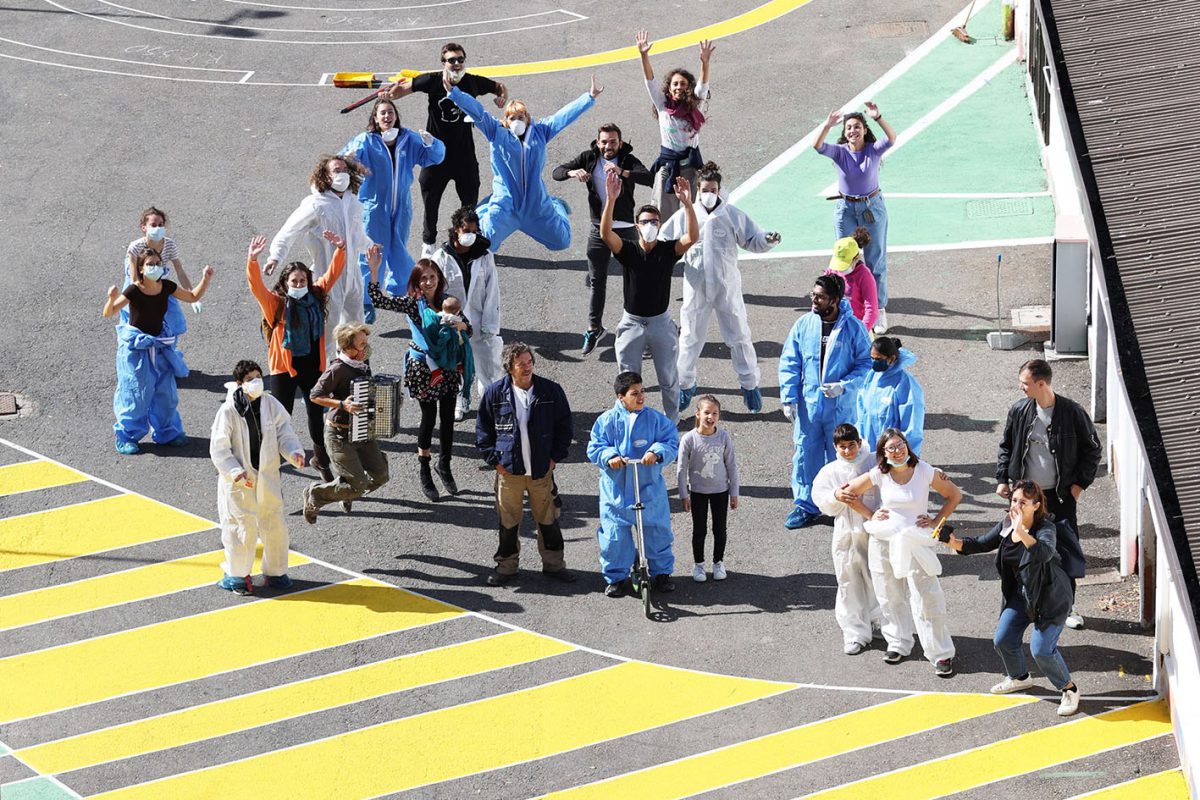 Piazza Aperta in piazzale Ferrara, ©Comune di Milano
Piazza Aperta in piazzale Ferrara, ©Comune di Milano
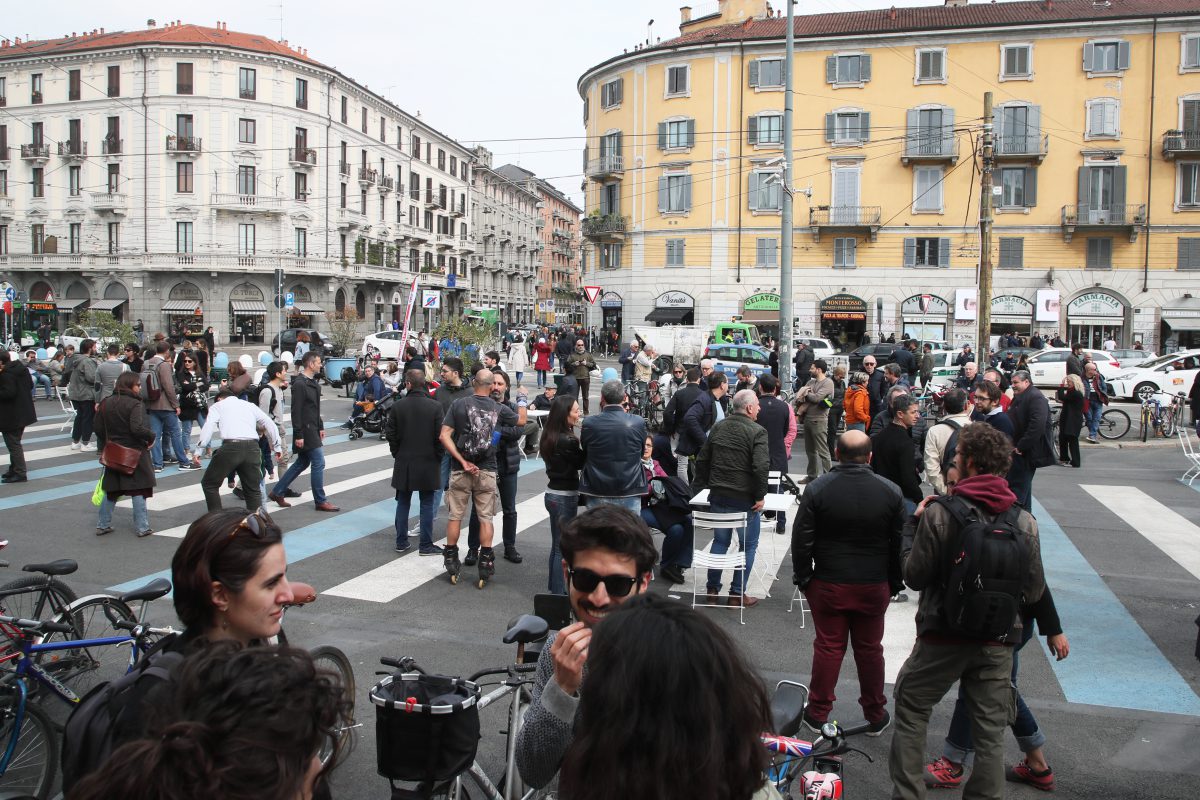 Inauguration of Piazza Aperta in Porta Genova, ©Comune di Milano
Inauguration of Piazza Aperta in Porta Genova, ©Comune di Milano
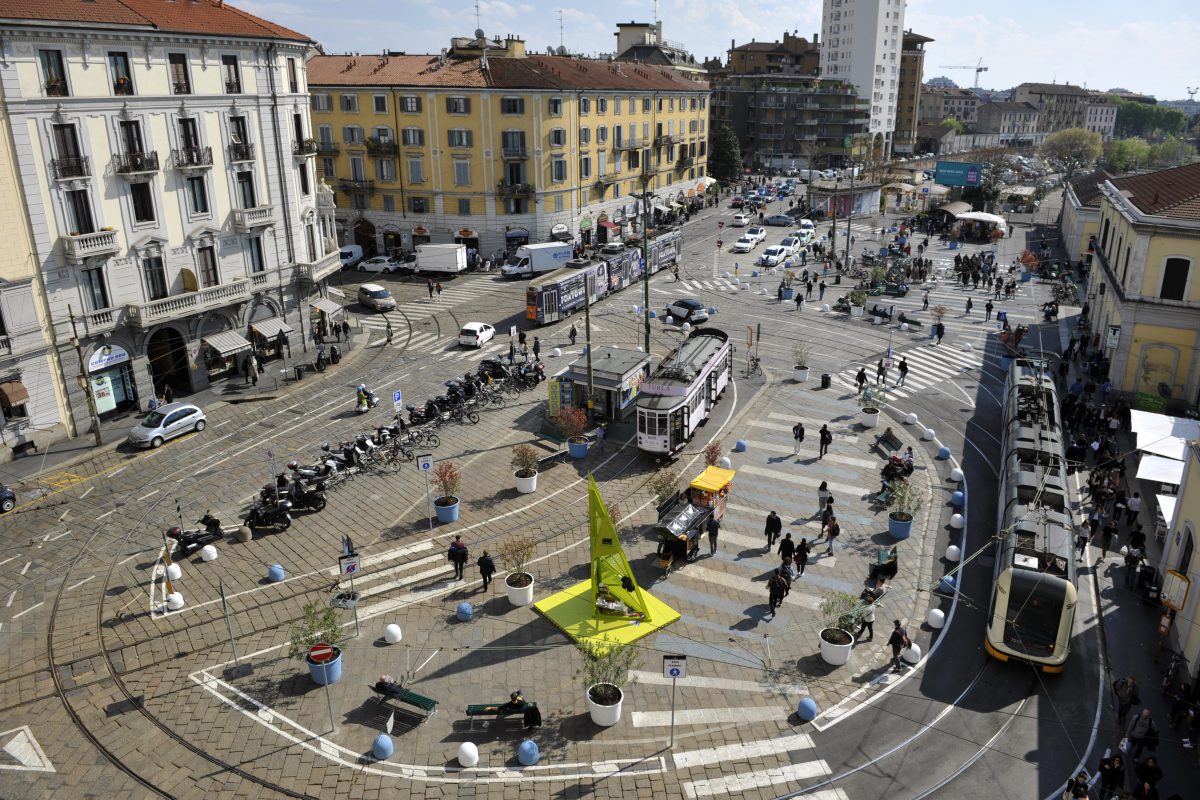 Aerial photo of Piazza Aperta in Porta Genova, ©Comune di Milano
Aerial photo of Piazza Aperta in Porta Genova, ©Comune di Milano
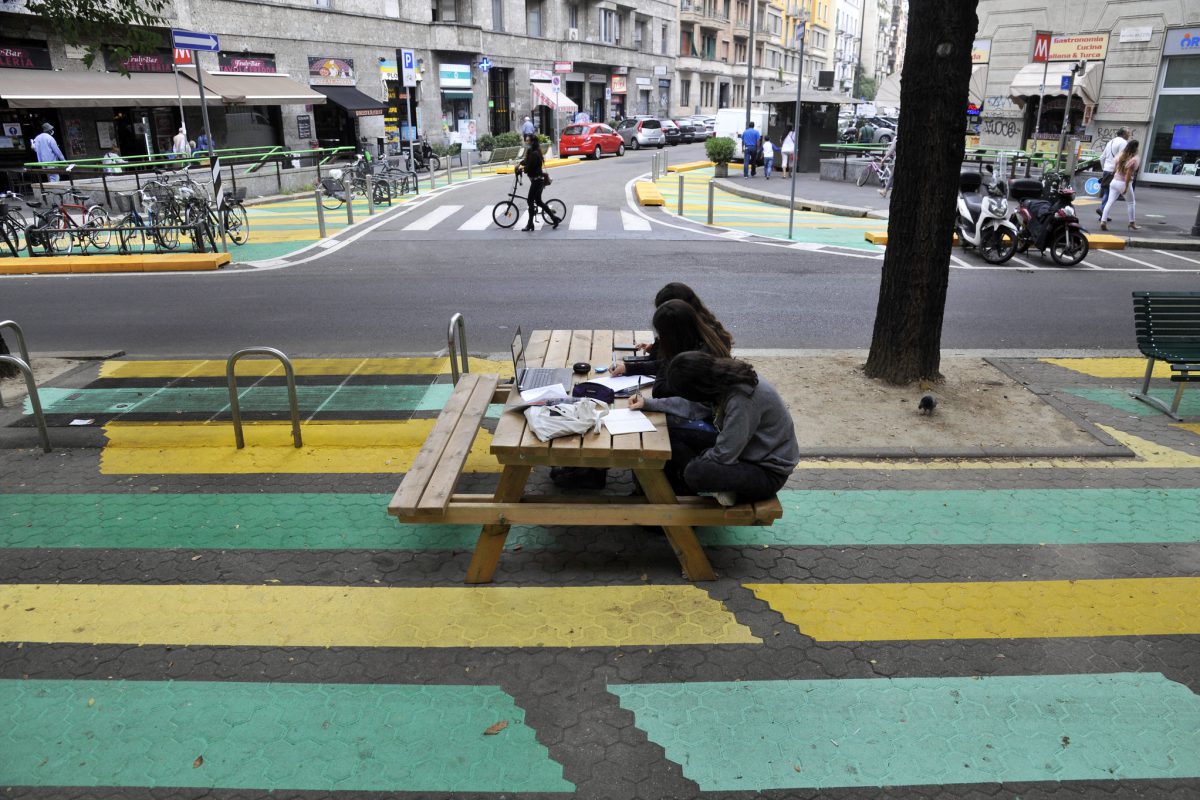 Piazza Aperta in via Pacini, ©Comune di Milano
Piazza Aperta in via Pacini, ©Comune di Milano
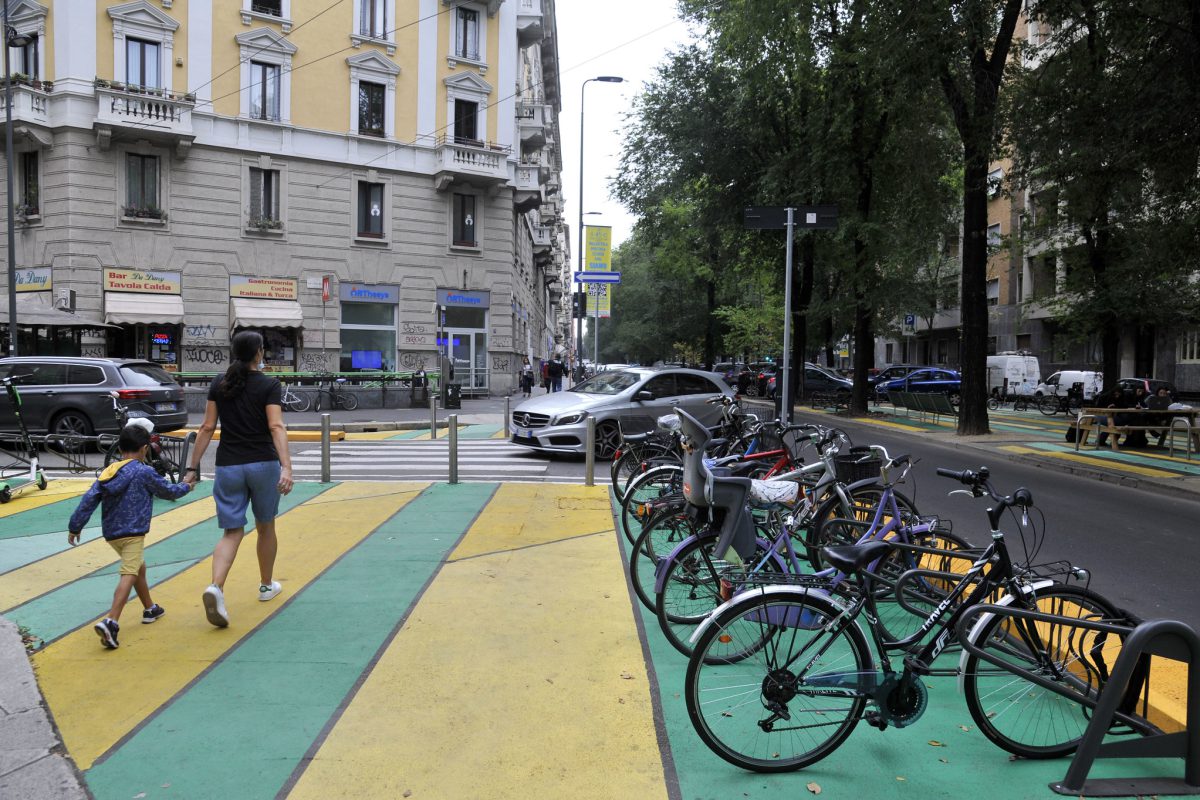 Piazza Aperta in via Pacini, ©Comune di Milano
Piazza Aperta in via Pacini, ©Comune di Milano
Results
In fact, the first findings of the monitoring, which is still ongoing, have given remarkably positive results. There is an increase in the perception of safety, the time people linger and the general appreciation of space. Moreover, many citizens are supportive of the idea to make the interventions permanent. This is perhaps the greatest success.
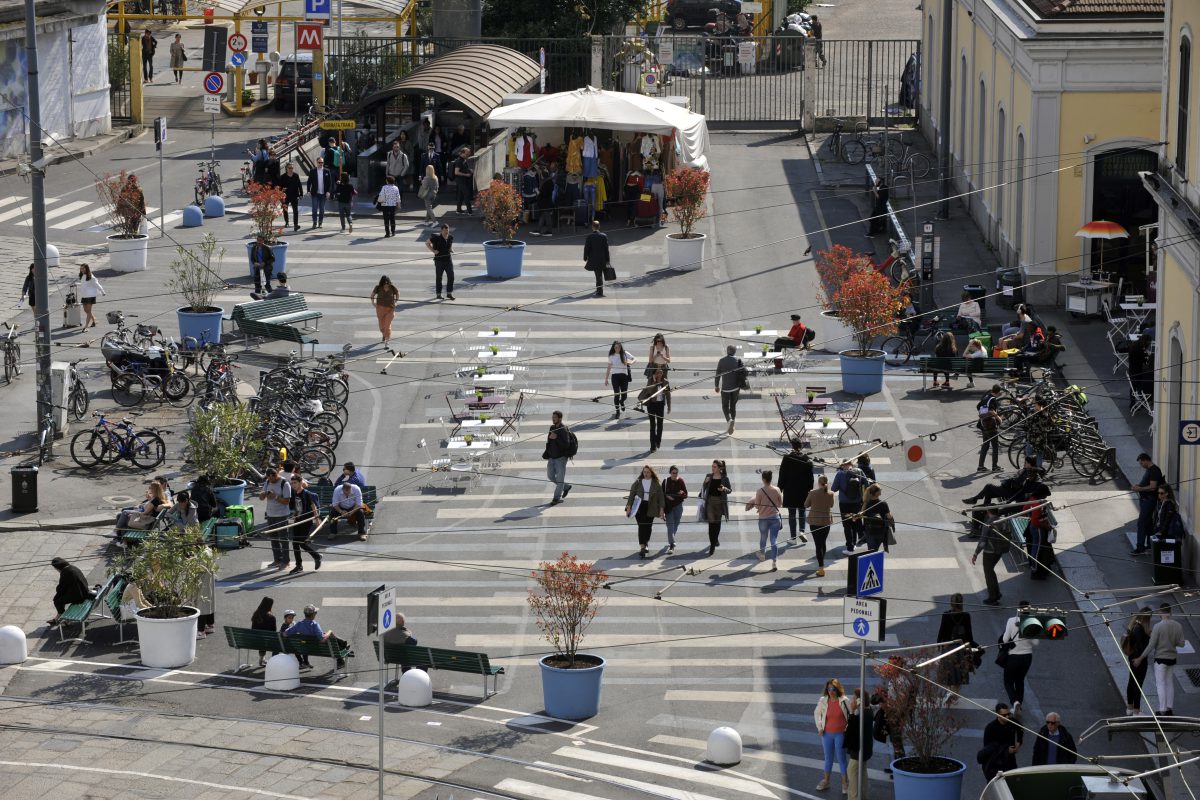 Piazza Aperta in Porta Genova, © Comune di Milano
Piazza Aperta in Porta Genova, © Comune di Milano
Long-term strategy
Consequently, in combination with the realization of the Open Squares, the need arose to find funding for the permanent implementation of these new successful places. Piazza Dergano and Piazza Angilberto II, the pilot projects, are both under permanent construction now thanks to municipal funding. The tactical interventions have served as guidelines for the final designs. Now the two neighbourhoods have straightforwardly gained their urban hearts.
See the example below of the Belloveso Square process at Niguarda, from tactical to definitive.
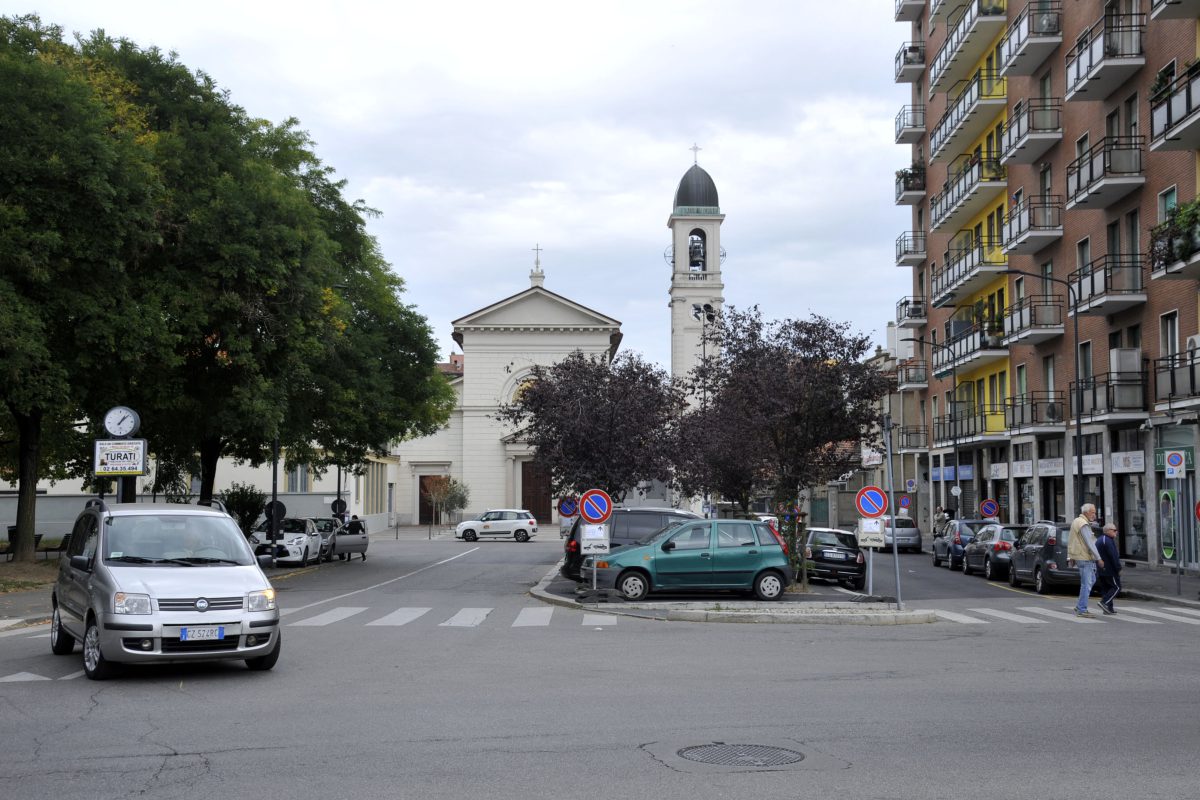 Piazza Belloveso before
Piazza Belloveso before
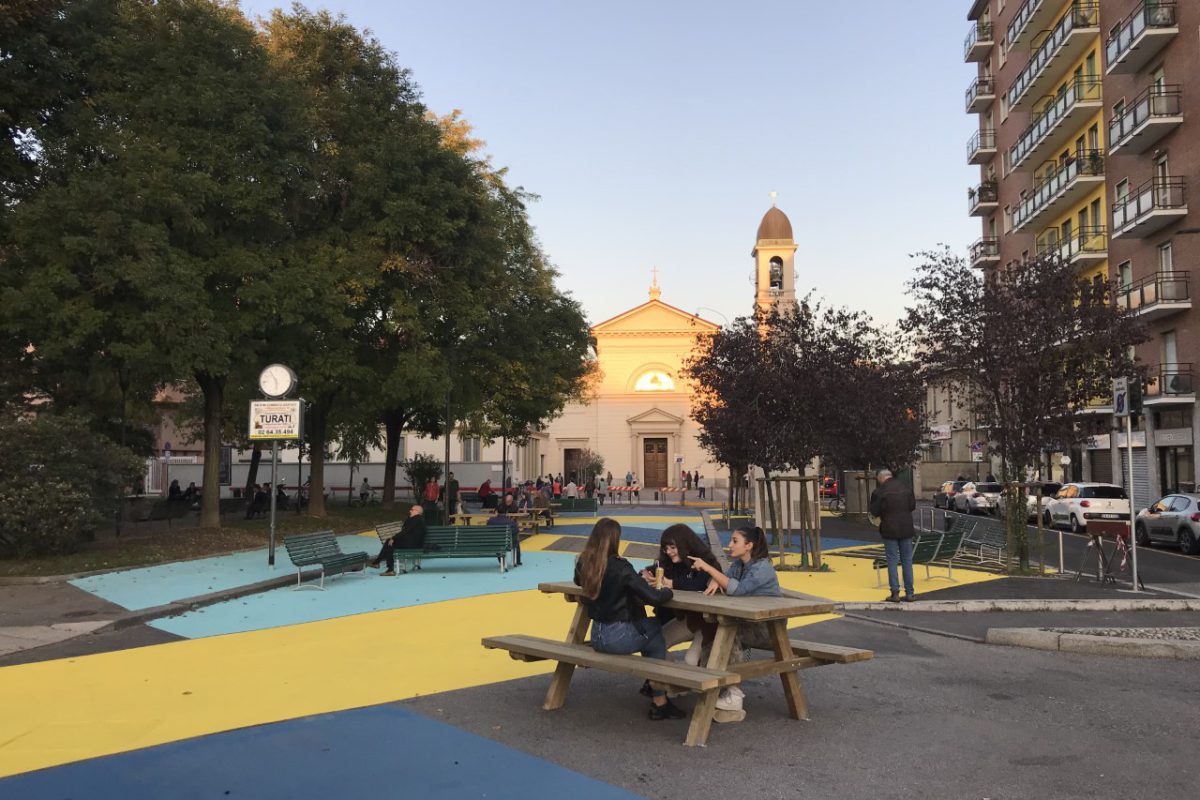 Tactical intervention on Piazza Belloveso
Tactical intervention on Piazza Belloveso
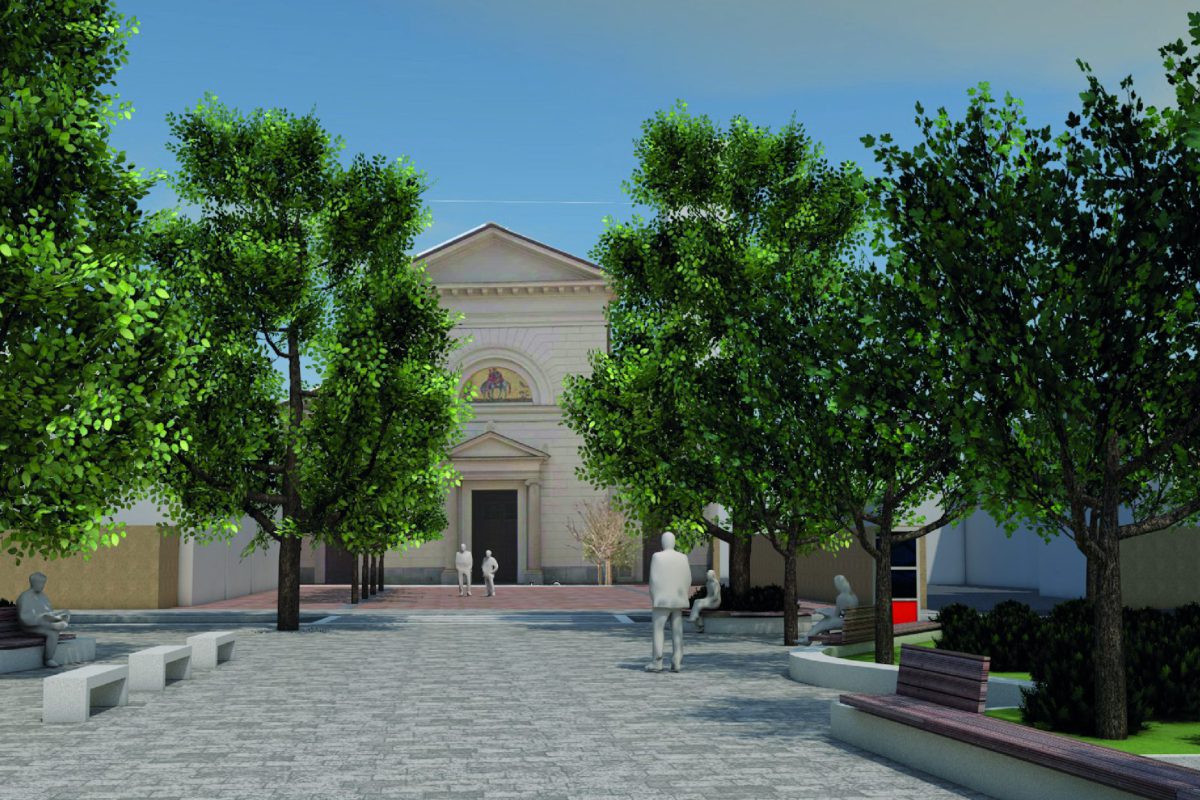 Final arrangement project Piazza Belloveso, © Comune di Milano
Final arrangement project Piazza Belloveso, © Comune di Milano
A new vision of public space
The arrival of Covid-19 in Italy at the start of 2020 brought about safety measures which led to a noticeable shift in the use of public space. Suddenly cities were empty, squares and streets deserted. After the initial moment of shock, it became clear the great opportunity to have no traffic – a sight many of us had never seen before. Concurrently, there was a greater demand for public space with the social distancing restrictions, leading to visions of greater cycling infrastructure as well as wider open spaces in which to move around.
The publication of the dossier
With other cities around Europe facing similar challenges and coming to similar conclusions, the need for greater pedestrian and cycling infrastructures became clearer than ever, prompting the municipality to include this in their general strategy plans.
Thus the program Strade Aperte (Open roads) was born with the collaboration of the municipality and “AMAT Agenzia Mobilità Ambiente Territorio”. It encompassed strategies, actions and tools for cyclists and pedestrians, to guarantee social distancing measures in urban travel and sustainable mobility. The objective was to create a more sustainable and livable city in which social distancing and healthy, active habits were possible, in order to manage and mitigate the effects of Covid-19. Moreover, it aimed to reshape urban spaces to be safe for everyone.
Planned actions:
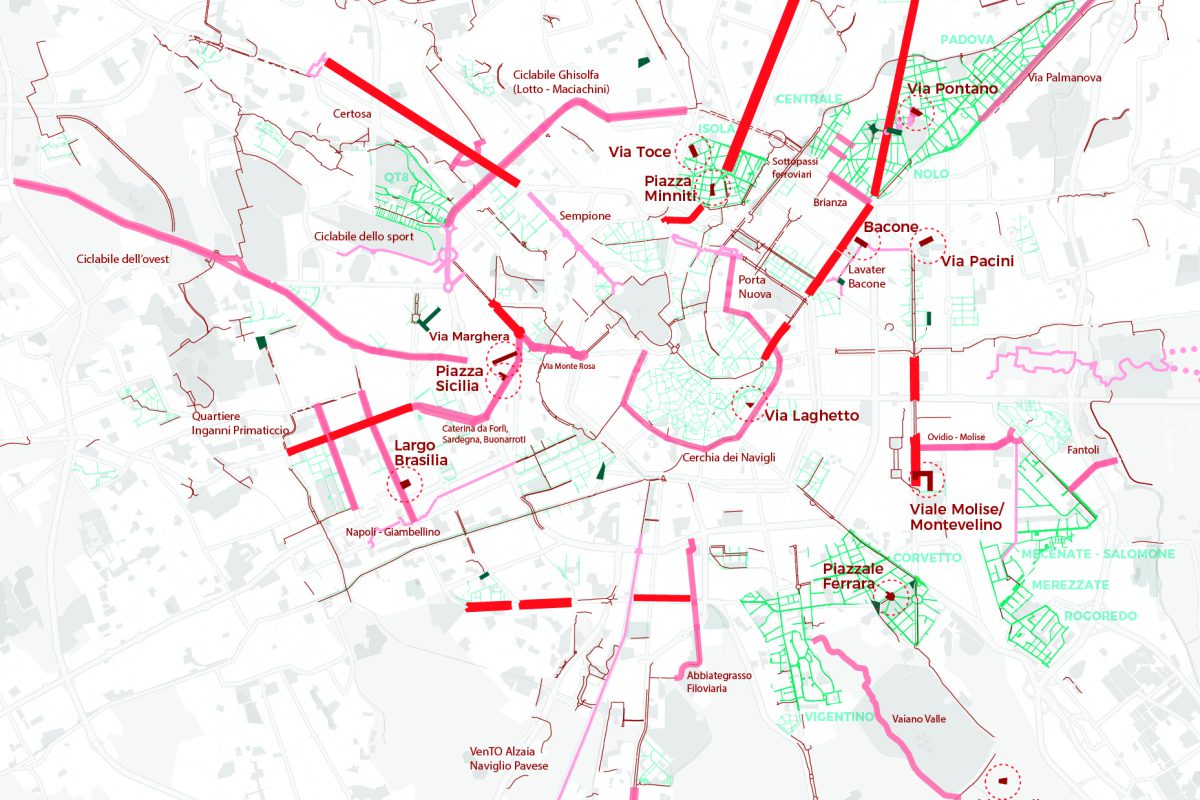 Tactical bike lanes implementation strategy, extract from the Strade Aperte dossier, © Comune di Milano
Tactical bike lanes implementation strategy, extract from the Strade Aperte dossier, © Comune di Milano
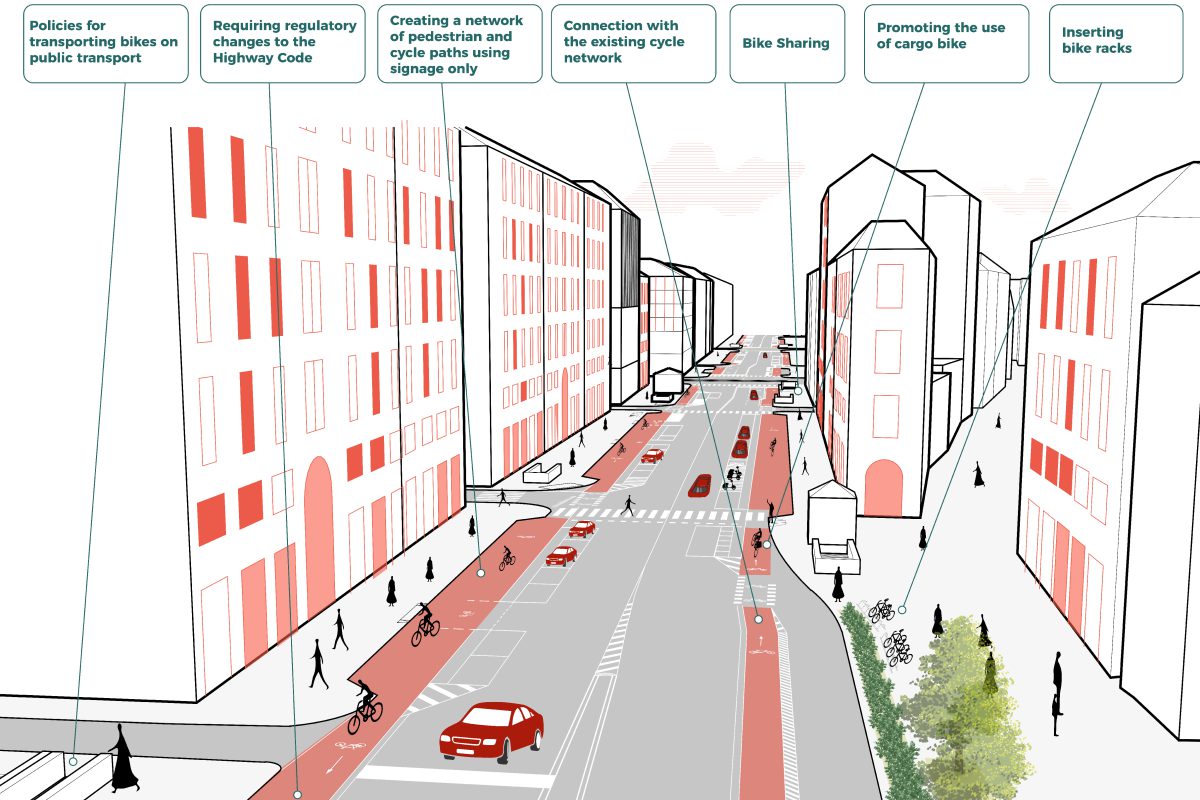
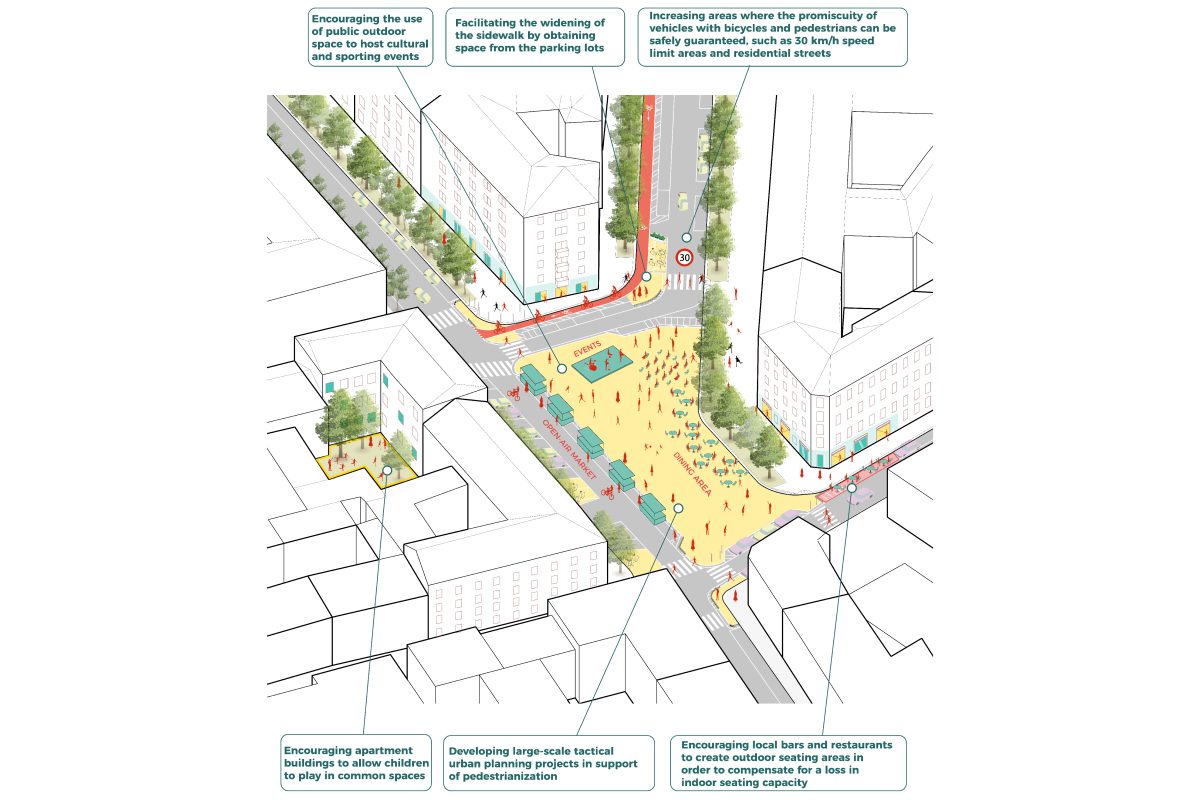
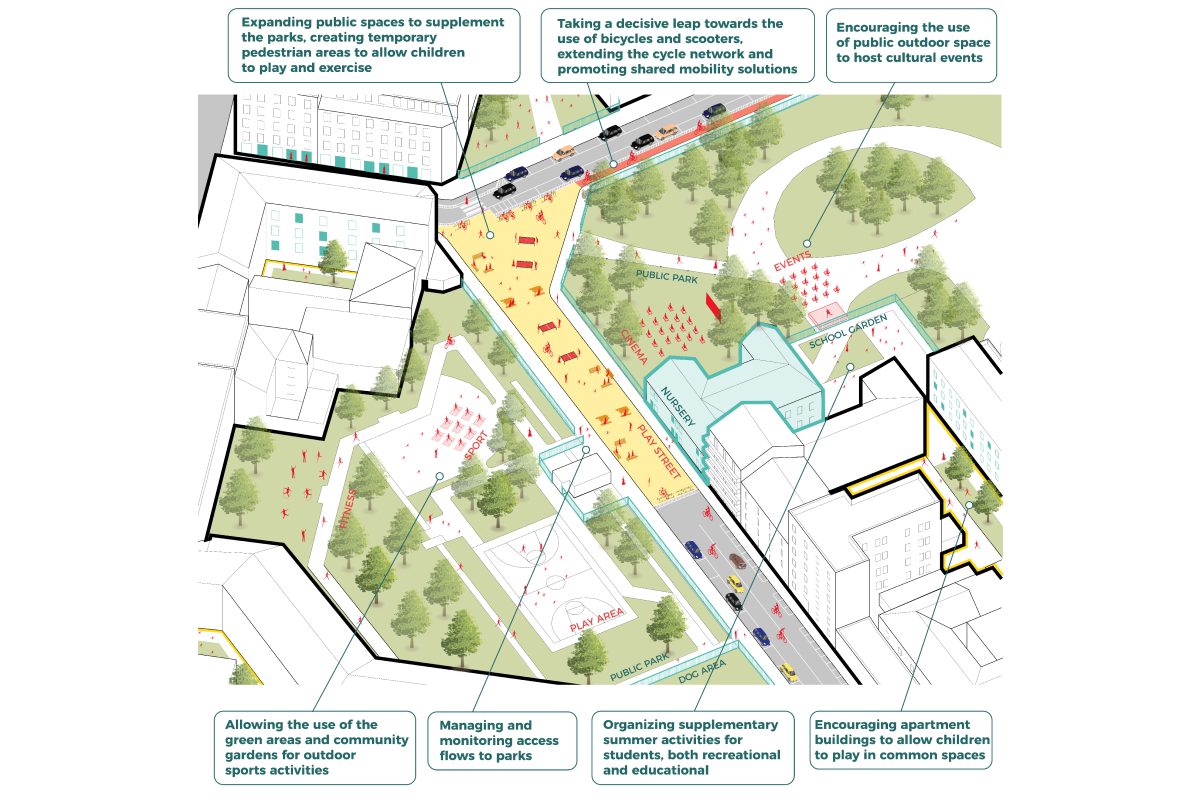
Intervention on Corso Buenos Aires
The first actual step was largely symbolic: the creation of a bicycle lane through signage in one of the most famous and busy intersections of the city, Corso Buenos Aires. The intervention was part of the general vision of connecting Piazza San Babila (right in the center) with Sesto San Giovanni, following the route of the M1 subway line. The design and implementation was very fast, taking advantage of the significant reduction in traffic. The car lanes have been resized, the spaces for parking have been shifted and the sidewalks have been widened next to a protected bike lane, which has made crossing the intersection safer for all modalities of travel.
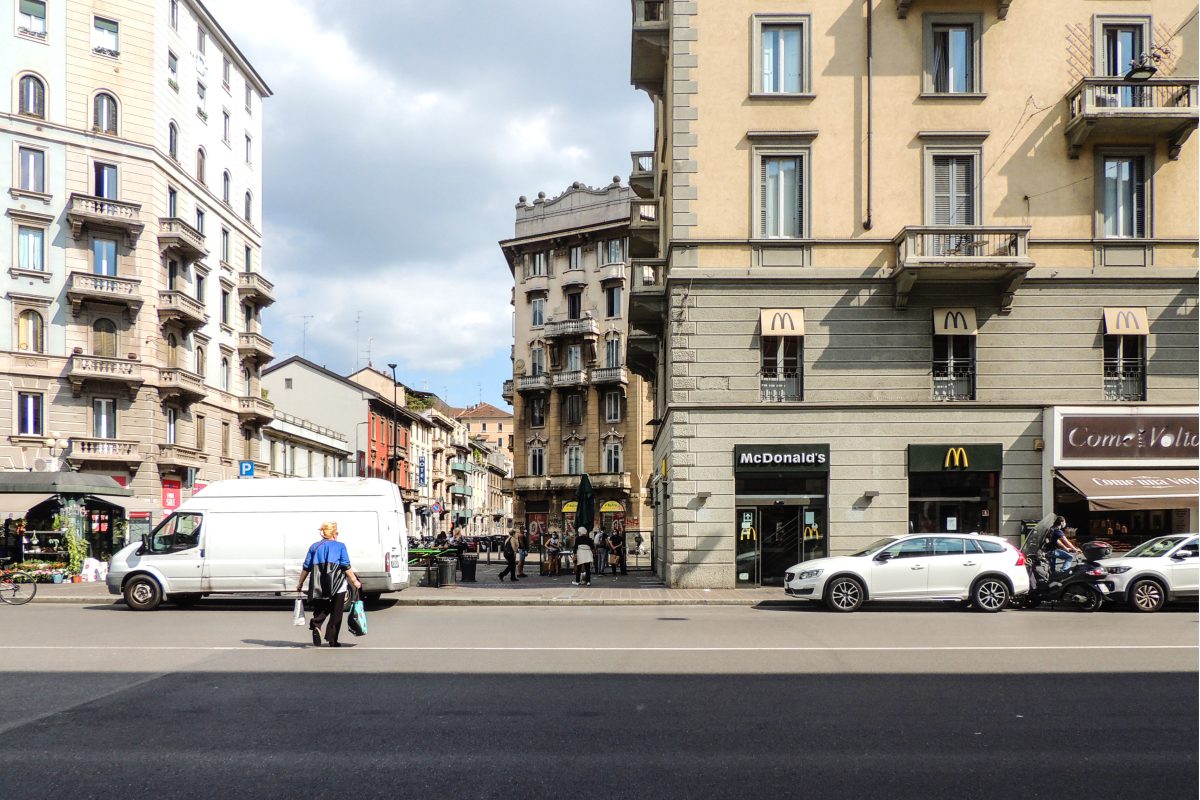 Before intervention on Corso Buenos Aires
Before intervention on Corso Buenos Aires
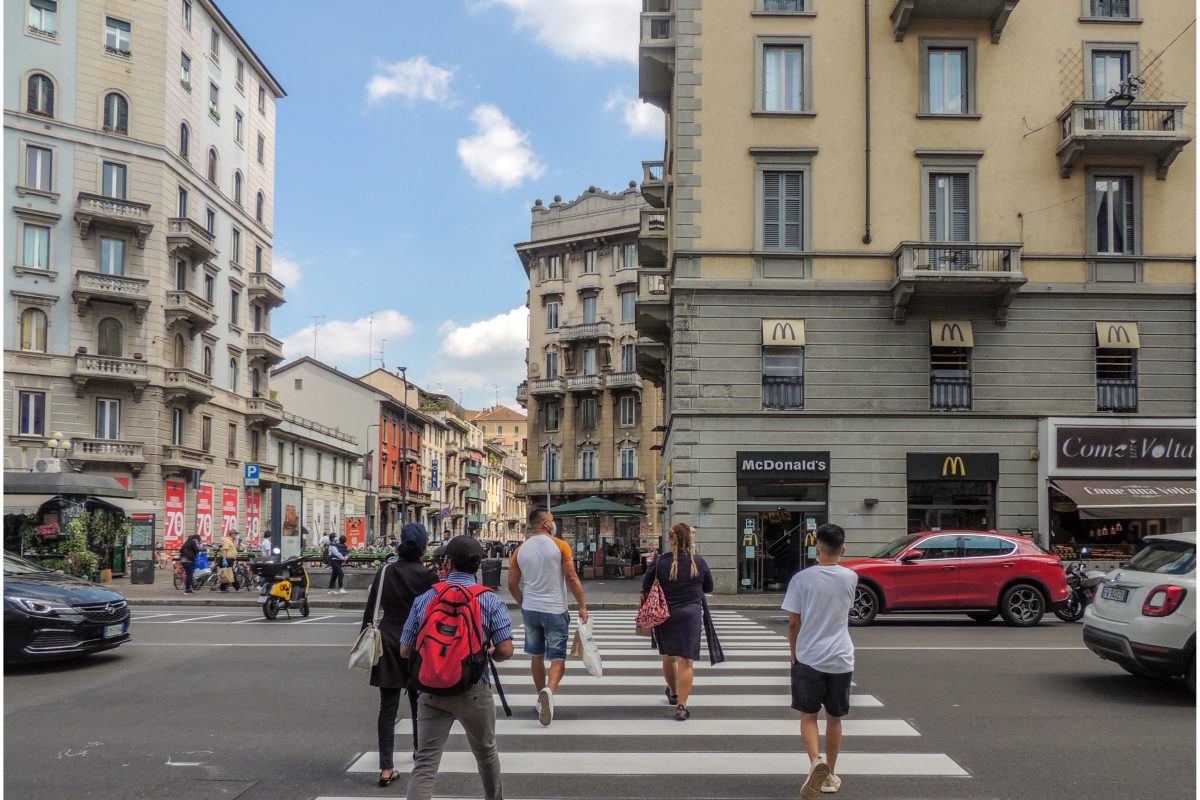 After intervention on Corso Buenos Aires
After intervention on Corso Buenos Aires
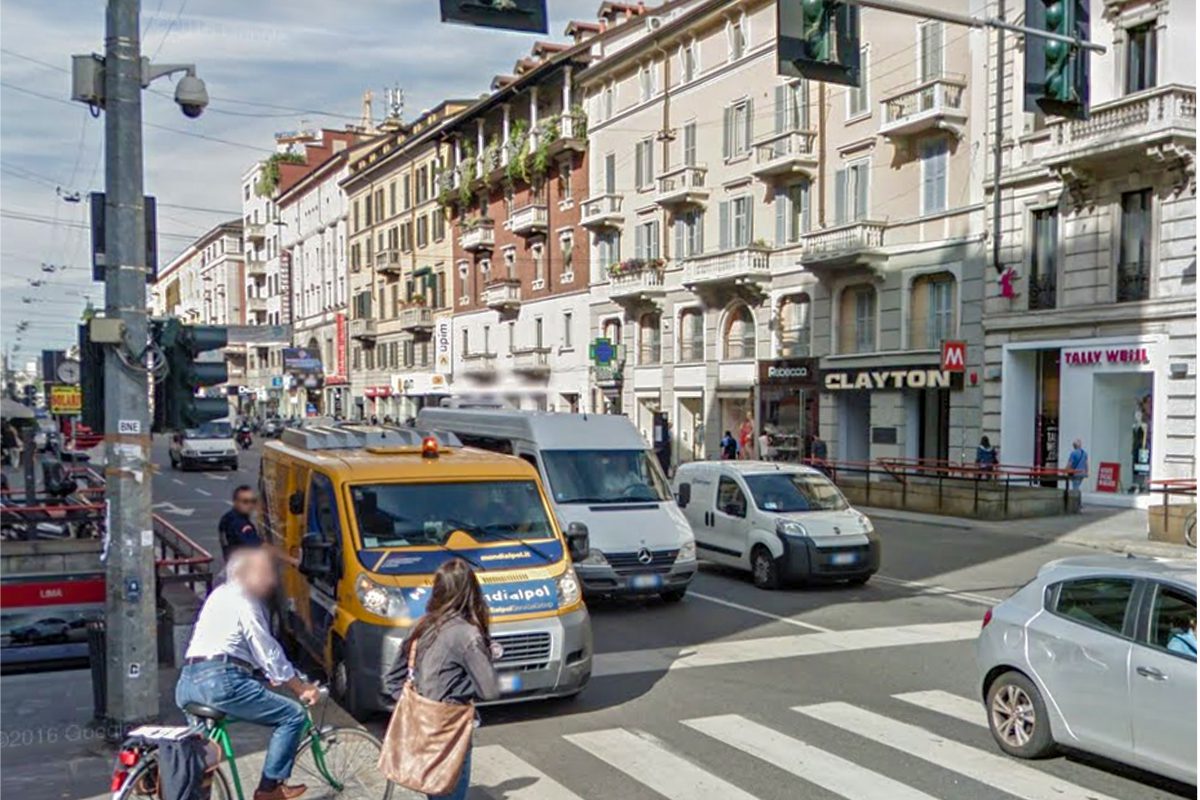 Before intervention on Corso Buenos Aires
Before intervention on Corso Buenos Aires
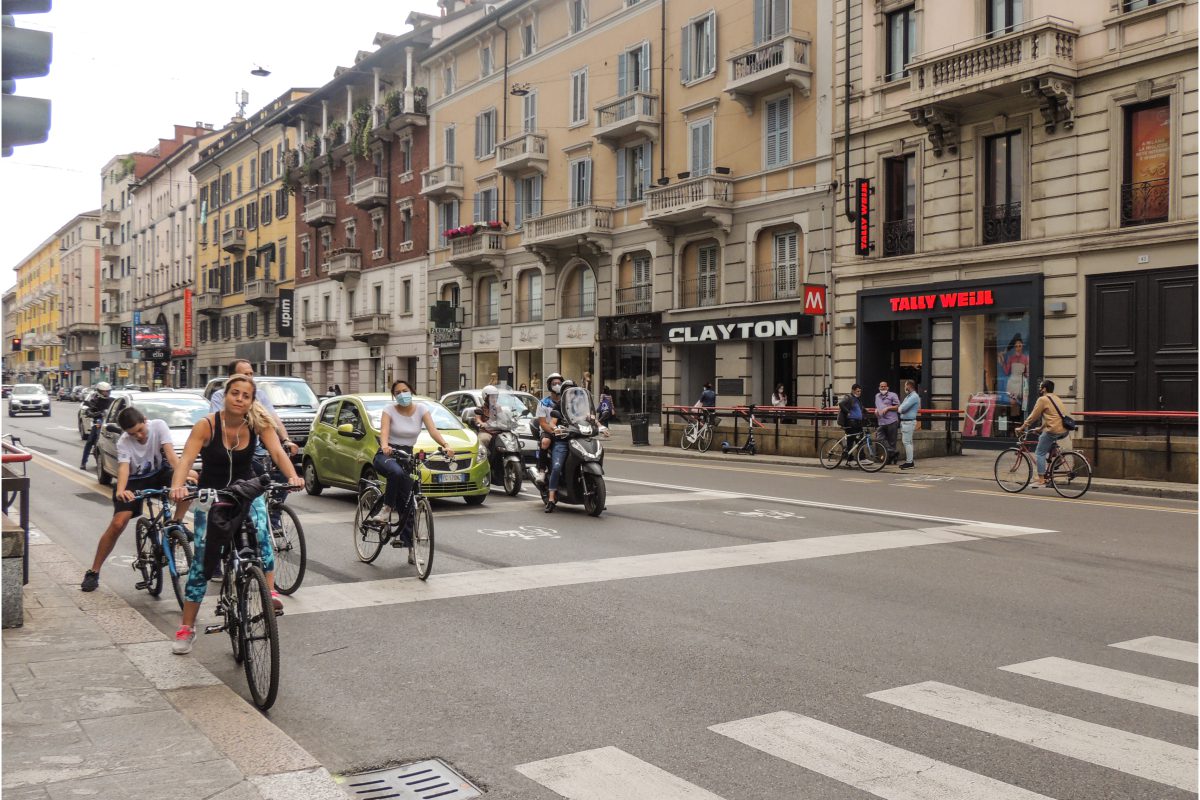 After intervention on Corso Buenos Aires
After intervention on Corso Buenos Aires
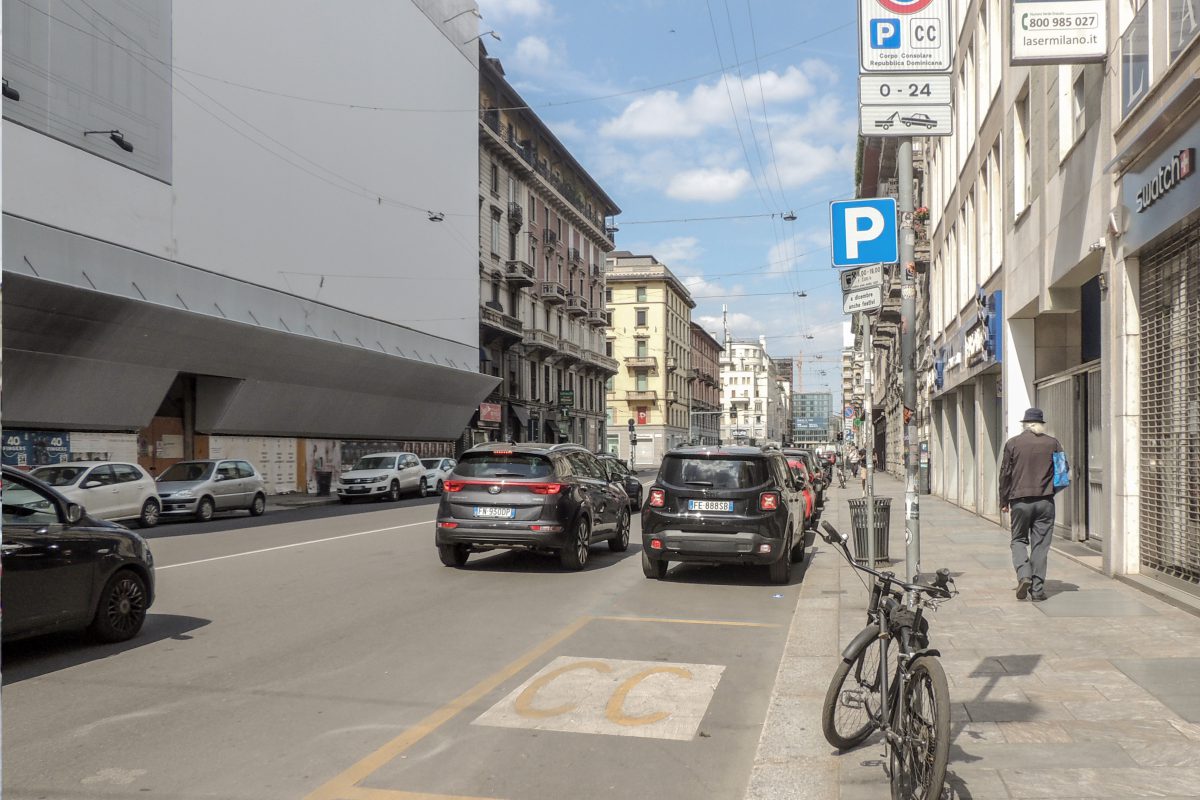 Before intervention on Corso Buenos Aires
Before intervention on Corso Buenos Aires
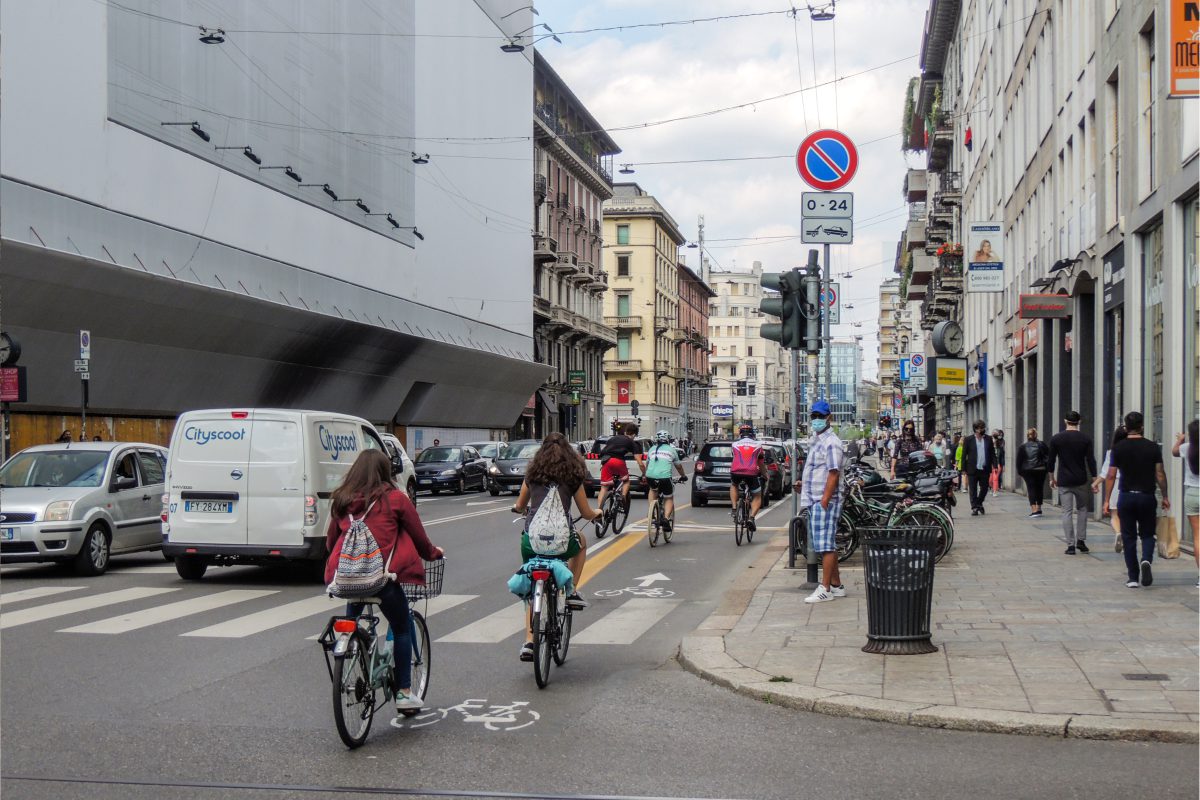 After intervention on Corso Buenos Aires
After intervention on Corso Buenos Aires
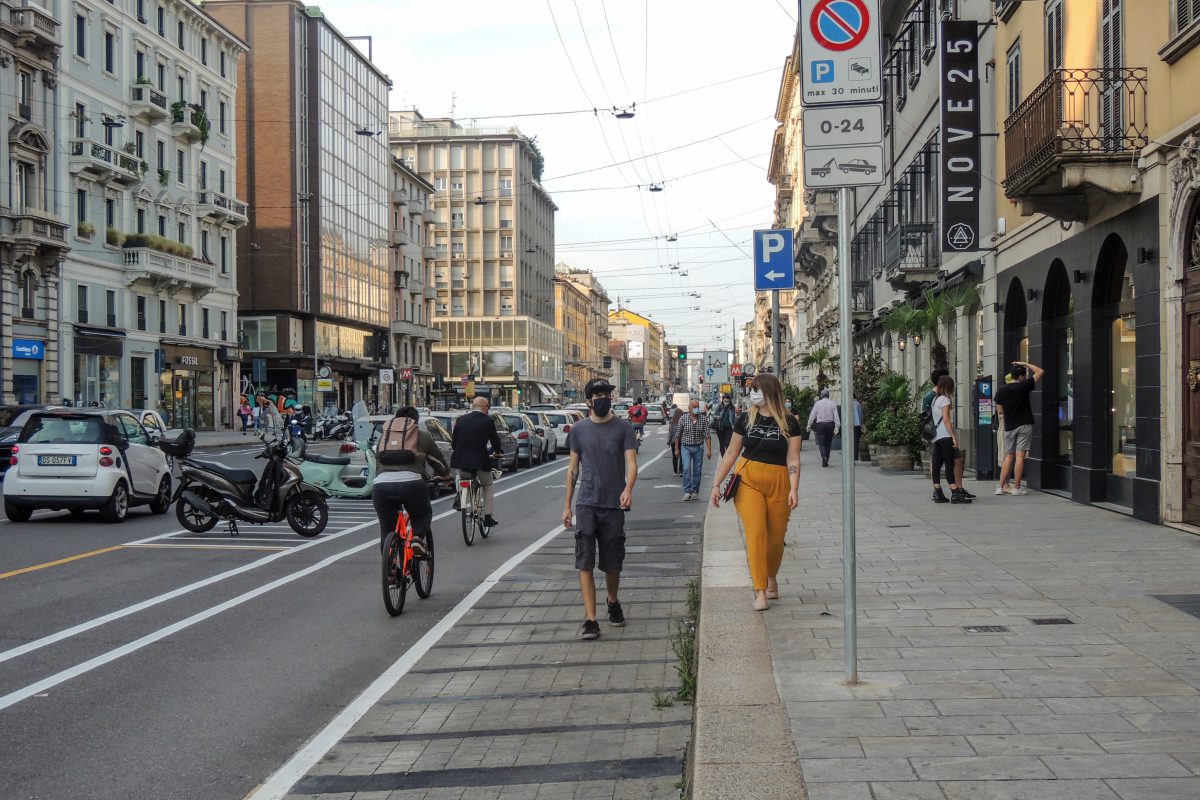 Corso Buenos Aires, © Comune di Milano
Corso Buenos Aires, © Comune di Milano
Towards change
Corso Buenos Aires was the first intervention of several and had the advantage of having great resonance, being a very important area in the city (example of press response: The Guardian: Milan seeks to prevent post crisis return of traffic pollution). There were heated discussions and debates, but this is a step in the right direction and its effectiveness is being constantly monitored. Sustainable mobility is now in the public consciousness through tangible and visible interventions, instead of merely a theoretical aim of the municipality. Current figures show that since the start of the pandemic there has been a steady increase in the purchase and use of bicycles, demonstrating that the mentality is changing.
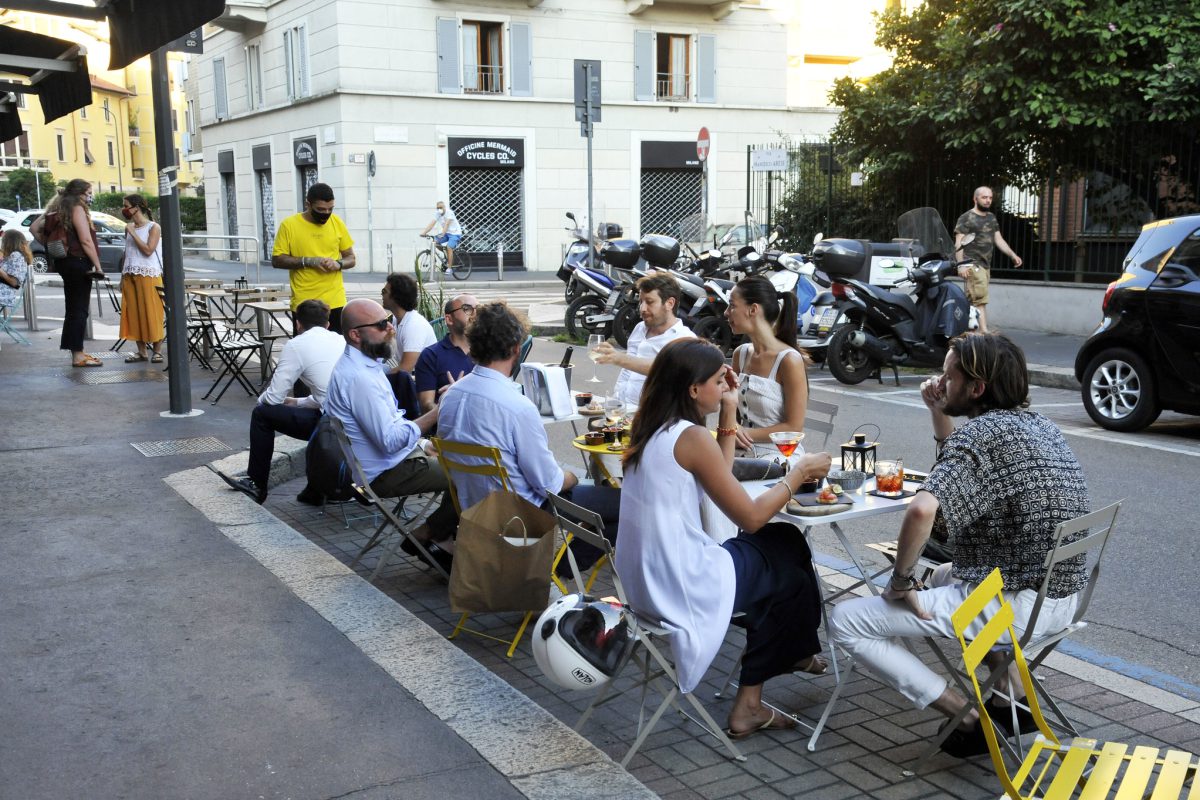 "Strade Aperte" - Open tables I, © Comune di Milano
"Strade Aperte" - Open tables I, © Comune di Milano
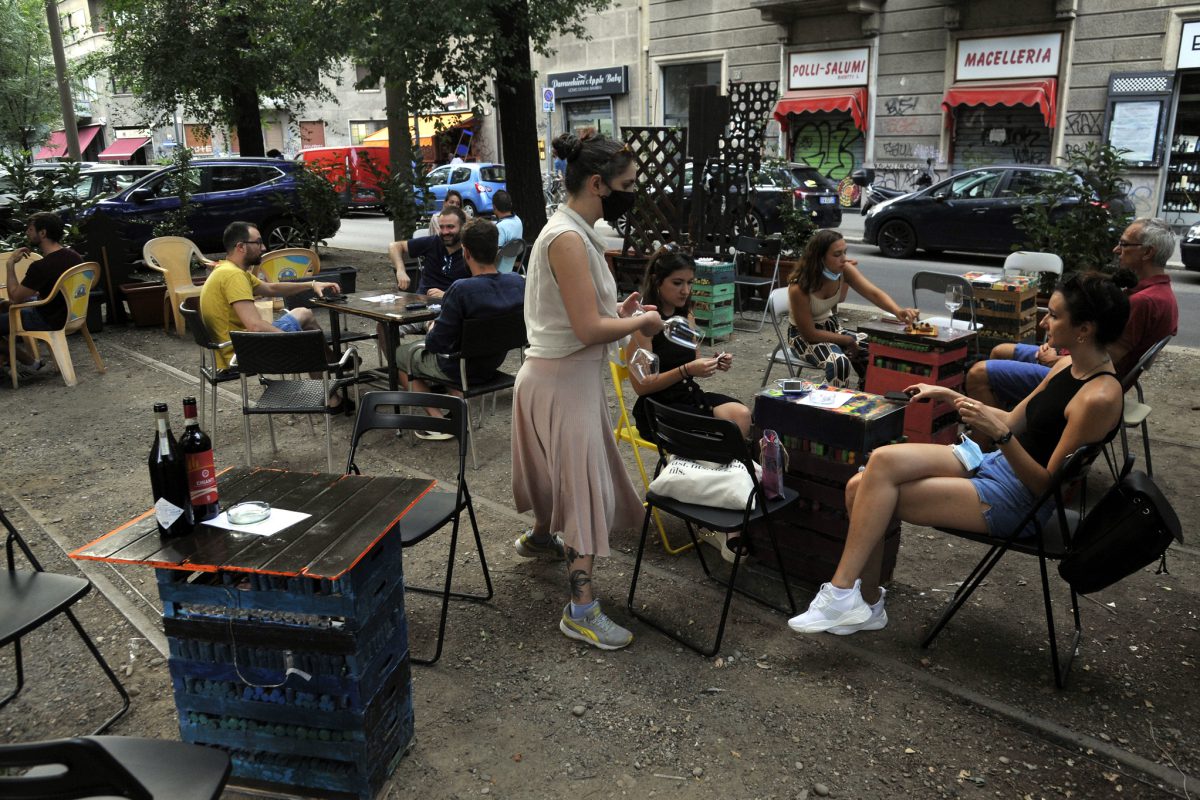 "Strade Aperte" - Open tables II, © Comune di Milano
"Strade Aperte" - Open tables II, © Comune di Milano
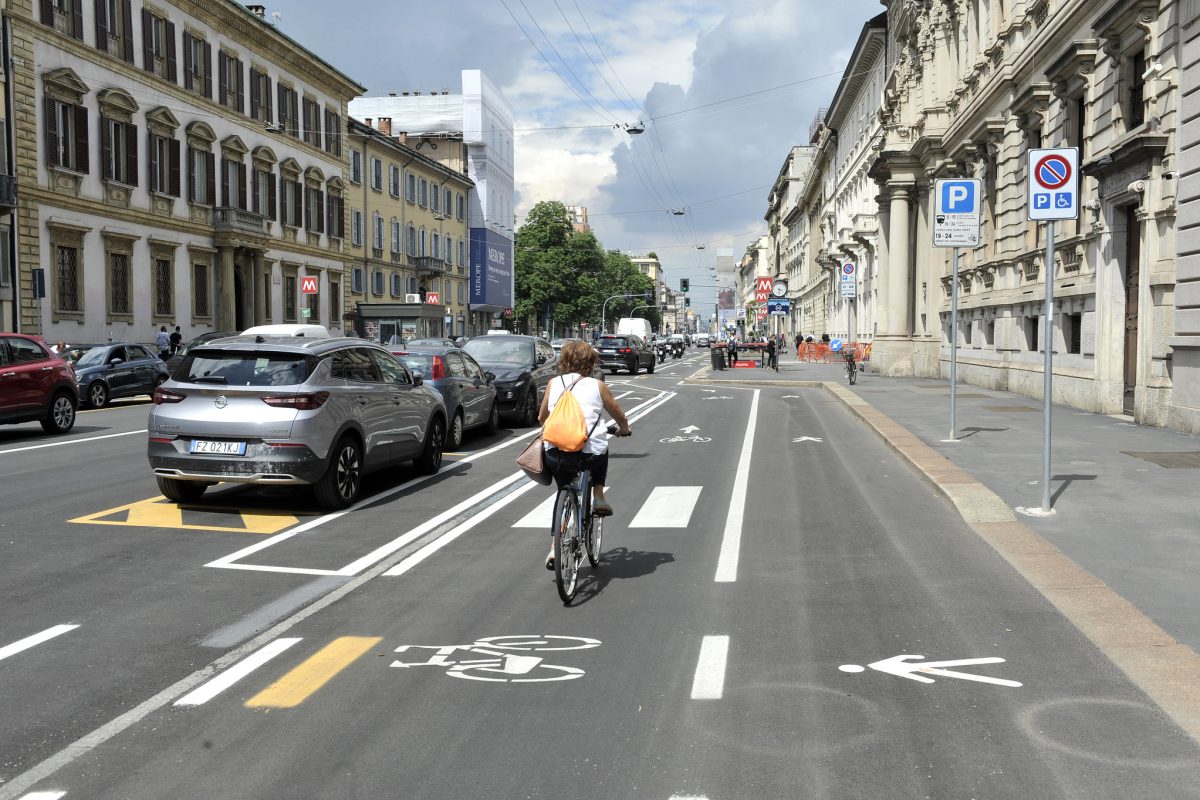 "Strade Aperte" Bike lane on Corso Venezia, © Comune di Milano
"Strade Aperte" Bike lane on Corso Venezia, © Comune di Milano
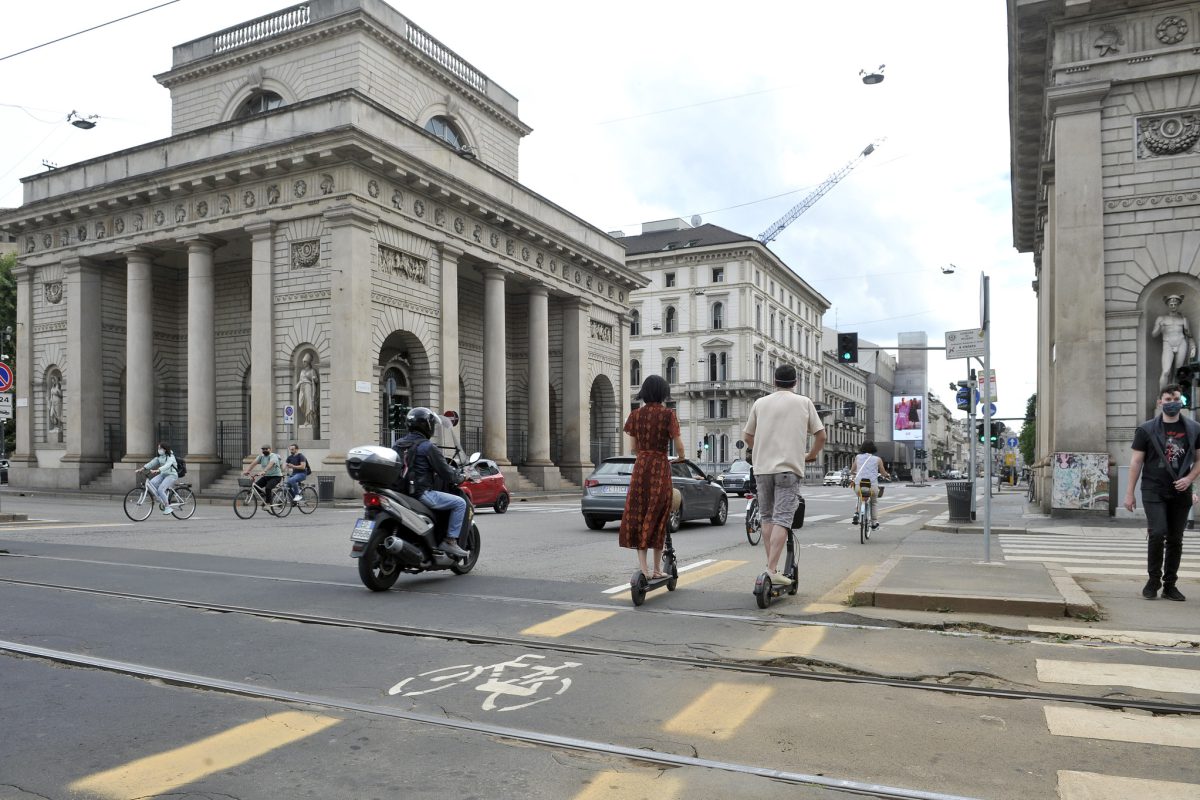 "Strade Aperte" Bike lane on Corso Buenos Aires I, © Comune di Milano
"Strade Aperte" Bike lane on Corso Buenos Aires I, © Comune di Milano
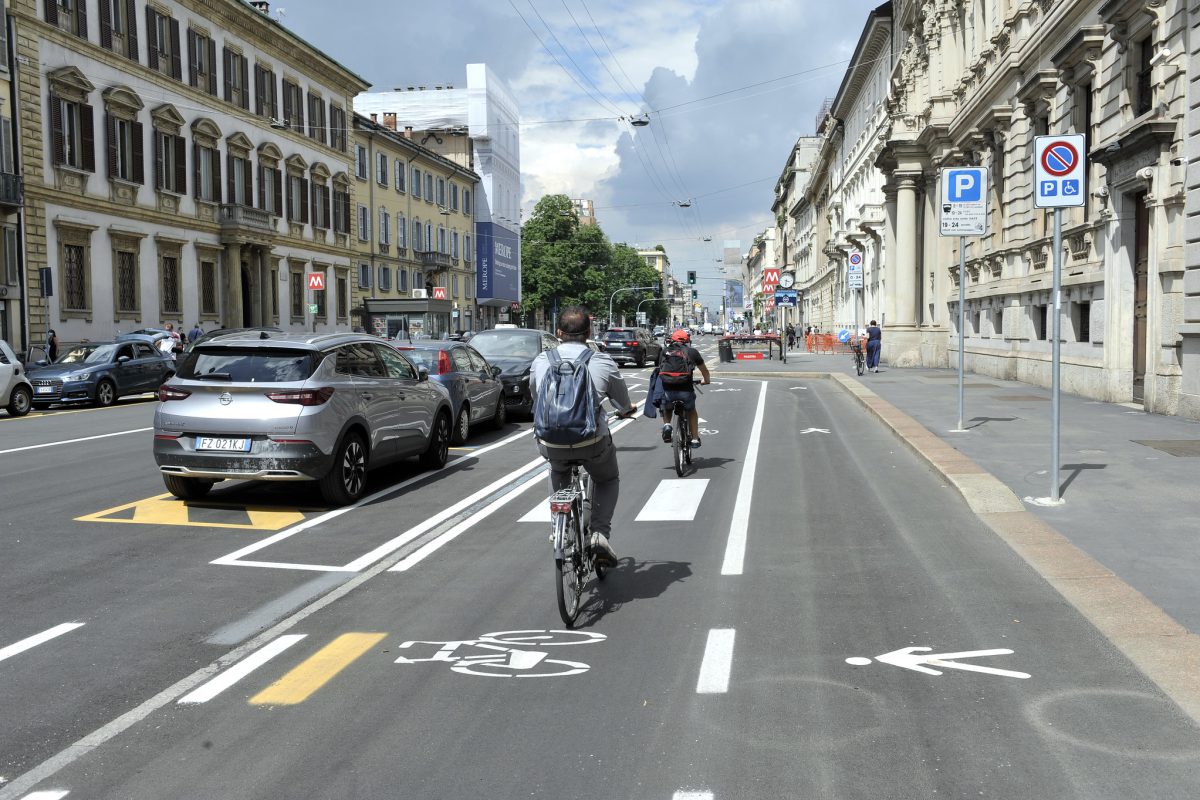 "Strade Aperte" Bike lane on Corso Buenos Aires II, © Comune di Milano
"Strade Aperte" Bike lane on Corso Buenos Aires II, © Comune di Milano
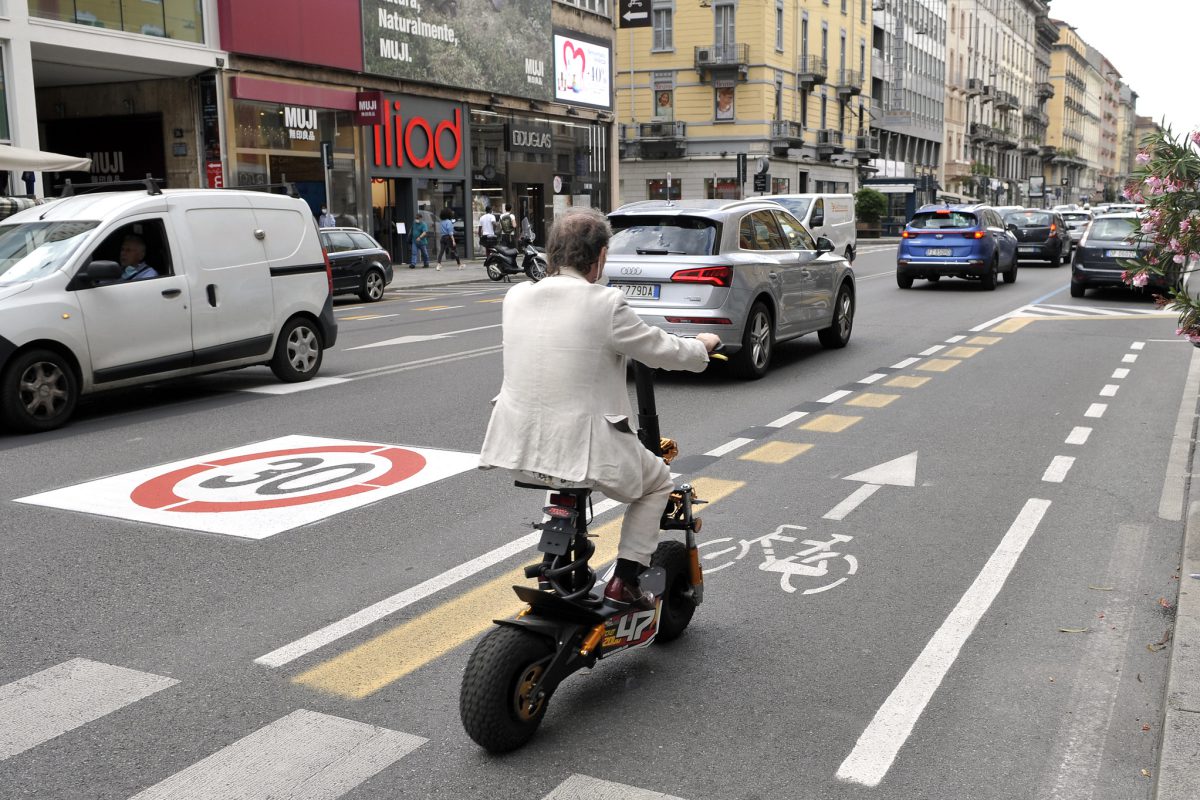 "Strade Aperte" Bike lane on Corso Buenos Aires III, © Comune di Milano
"Strade Aperte" Bike lane on Corso Buenos Aires III, © Comune di Milano
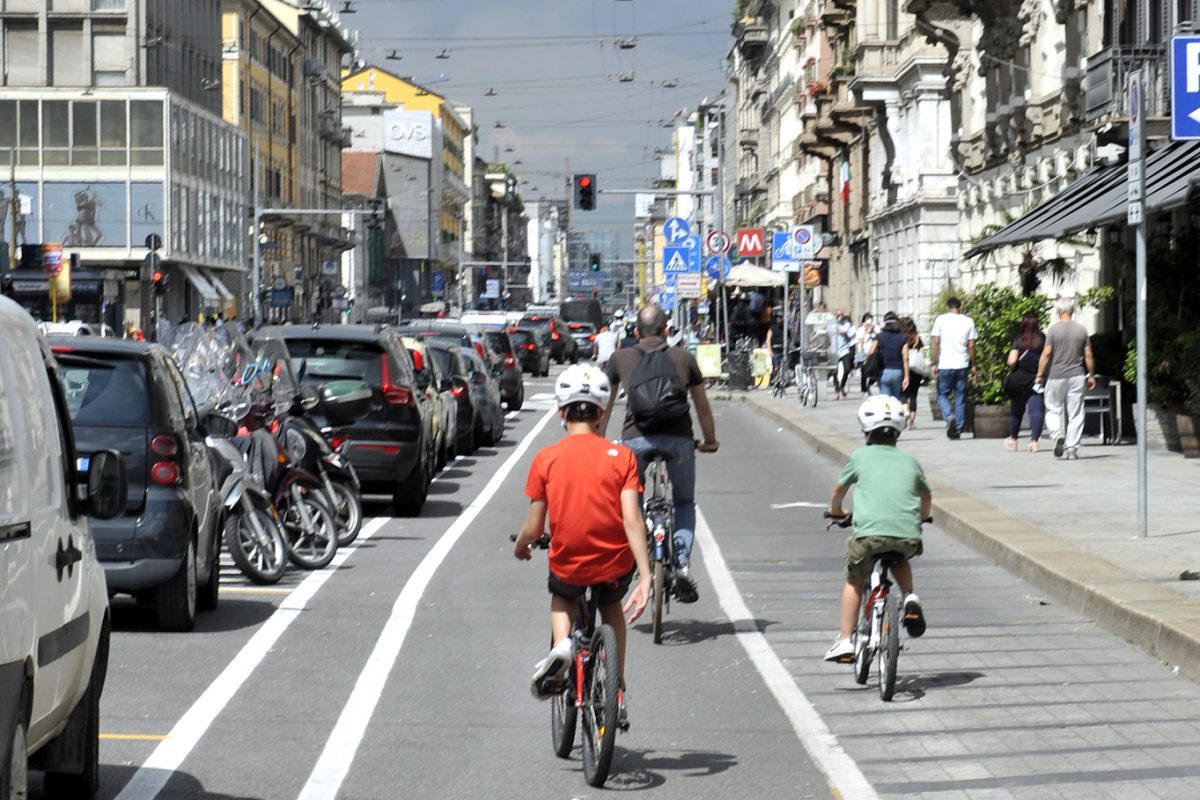 "Strade Aperte" Bike lane on Corso Buenos Aires IIII, © Comune di Milano
"Strade Aperte" Bike lane on Corso Buenos Aires IIII, © Comune di Milano
All of the projects were results of continuous collaboration between the municipality, residents and many other actors. There were many unexpected successes. They involved much more perspectives and realities than one could have imagined, and have helped to promote the idea of a city at human scale which is made with and for the people. The city’s advocacy strategies have been adopted, improved and used by citizens to promote their ideas.
Public space design guidelines
The various experiments carried out in recent years, which embraced tactical interventions and participatory processes, have made it clear that the city’s regulations should be adapted to contemporary needs: like walkability, cycling and the creation of a city for people. It was also necessary for the municipality to evolve itself. Therefore the municipality with the collaboration of “AMAT Agenzia Mobilità Ambiente Territorio” created and approved the new Public Space Guidelines. This strategic and technical document will be used as a standard for all future interventions on public space. Finally, and most triumphantly, the positive experience of pedestrians has prevailed over those of cars.
“The document of design guidelines for public space stands as an application element to accompany the planning tools already in place, with the contribution of all stakeholders. A manual for public space shared by those who use it, design it, build it and manage it. Thanks to the involvement and collaboration of various parties responsible for the management and development of the city, the manual collects and elaborates the experience (know-how) of Milan, which in recent years has seen significant changes and significant redevelopment. Combining it with the rich regulatory base, an informative and operational tool for planning has thus been generated, aimed at designers in the public and private sectors, but also at the communities of the neighbourhoods and the citizens.”
Thanks to this policy document the design process will change enormously. In the first picture below you see how the design process used to be. The second picture shows how the design process is now.
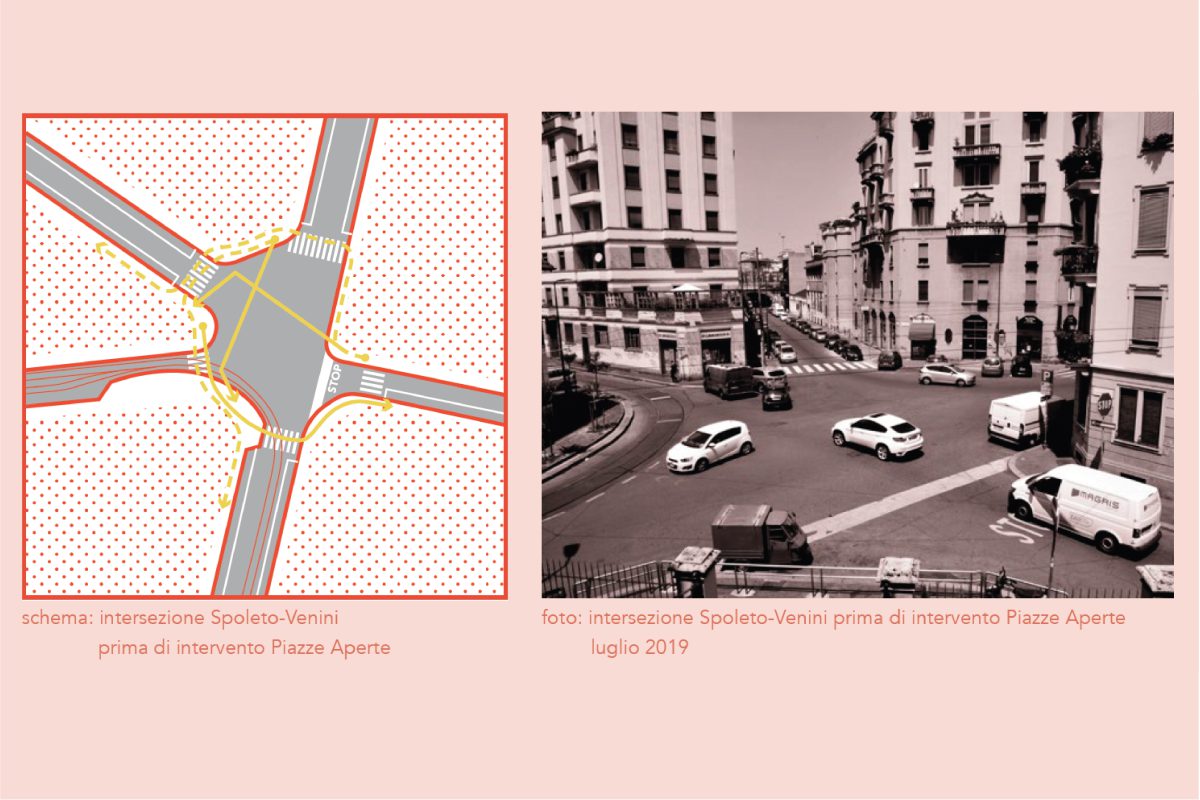 Guidelines 1, extract from “Spazio pubblico - Linee guida di progettazione”, Comune di Milano with AMAT Agenzia Mobilità Ambiente e Territorio, 2021
Guidelines 1, extract from “Spazio pubblico - Linee guida di progettazione”, Comune di Milano with AMAT Agenzia Mobilità Ambiente e Territorio, 2021
 Guidelines 1, extract from “Spazio pubblico - Linee guida di progettazione”, Comune di Milano with AMAT Agenzia Mobilità Ambiente e Territorio, 2021
Guidelines 1, extract from “Spazio pubblico - Linee guida di progettazione”, Comune di Milano with AMAT Agenzia Mobilità Ambiente e Territorio, 2021
Giulia is originally based in Milan as an architect and urban planner. She has always had a passion for themes such as collective life, mobility and discovering different ways space is experienced and used. It soon became clear that she wanted to focus on understanding and designing public spaces. She has been working for AMAT since 2019 as an advisor to the municipality of Milan. “AMAT – Agenzia Mobilità Ambiente e Territorio” is an agency that specializes in topics such as mobility, design and climate in urban developments. Here she works within the team “Officina Urbana” to design and coordinate urban development and renewal with the aim of promoting street life through its focus on the human dimension. Giulia found her way to STIPO through the ‘Erasmus for Young Entrepreneurs’ programme in 2021 and, after four months of collaboration, in December 2021, she took the step to set up STIPO Italy. In fact, among other things, she wants to focus on applying STIPO’s visions and ideas in Italy.
Do you want to learn more about these projects or have any questions? Feel free to contact Giulia Sicignano!